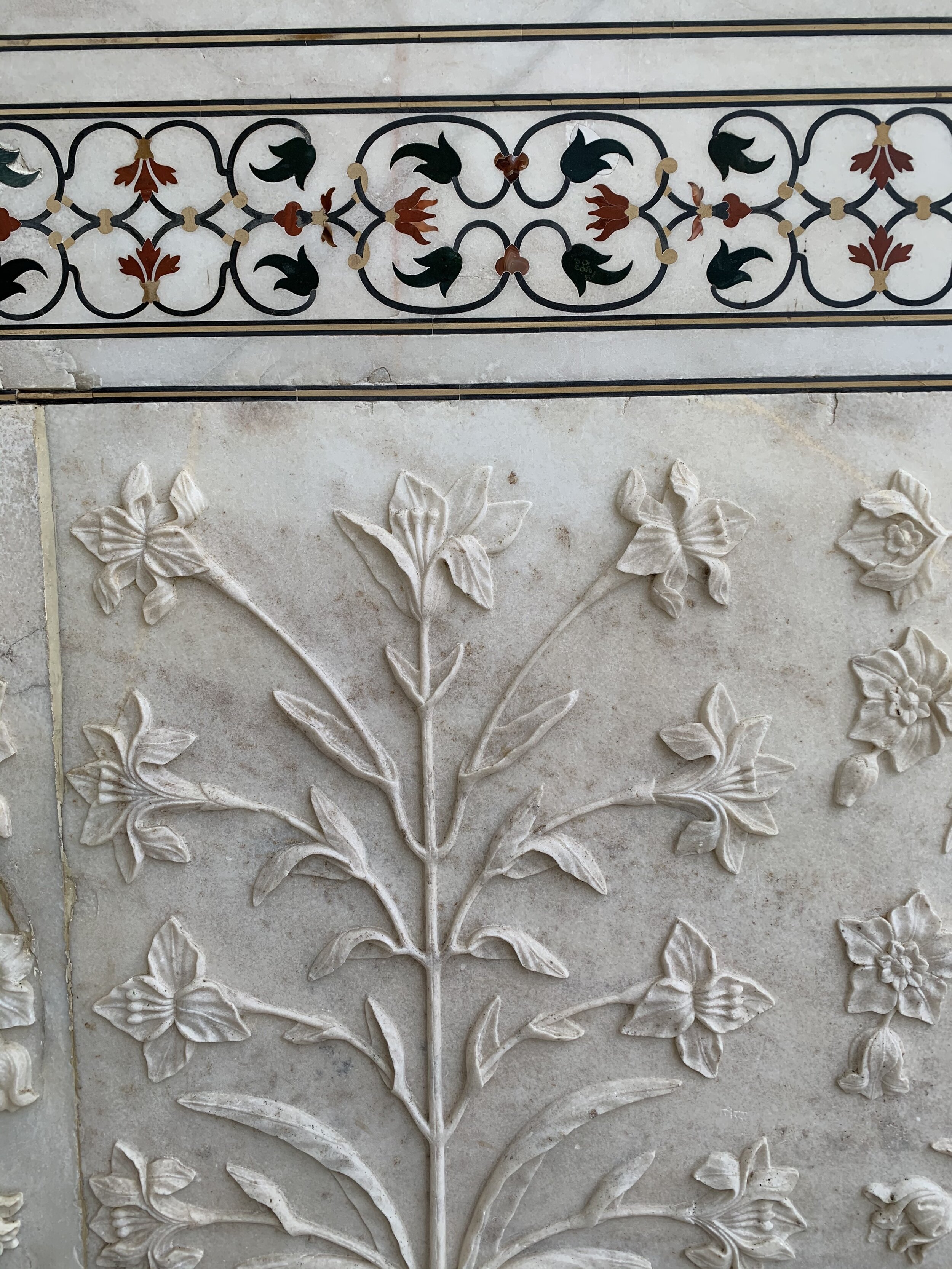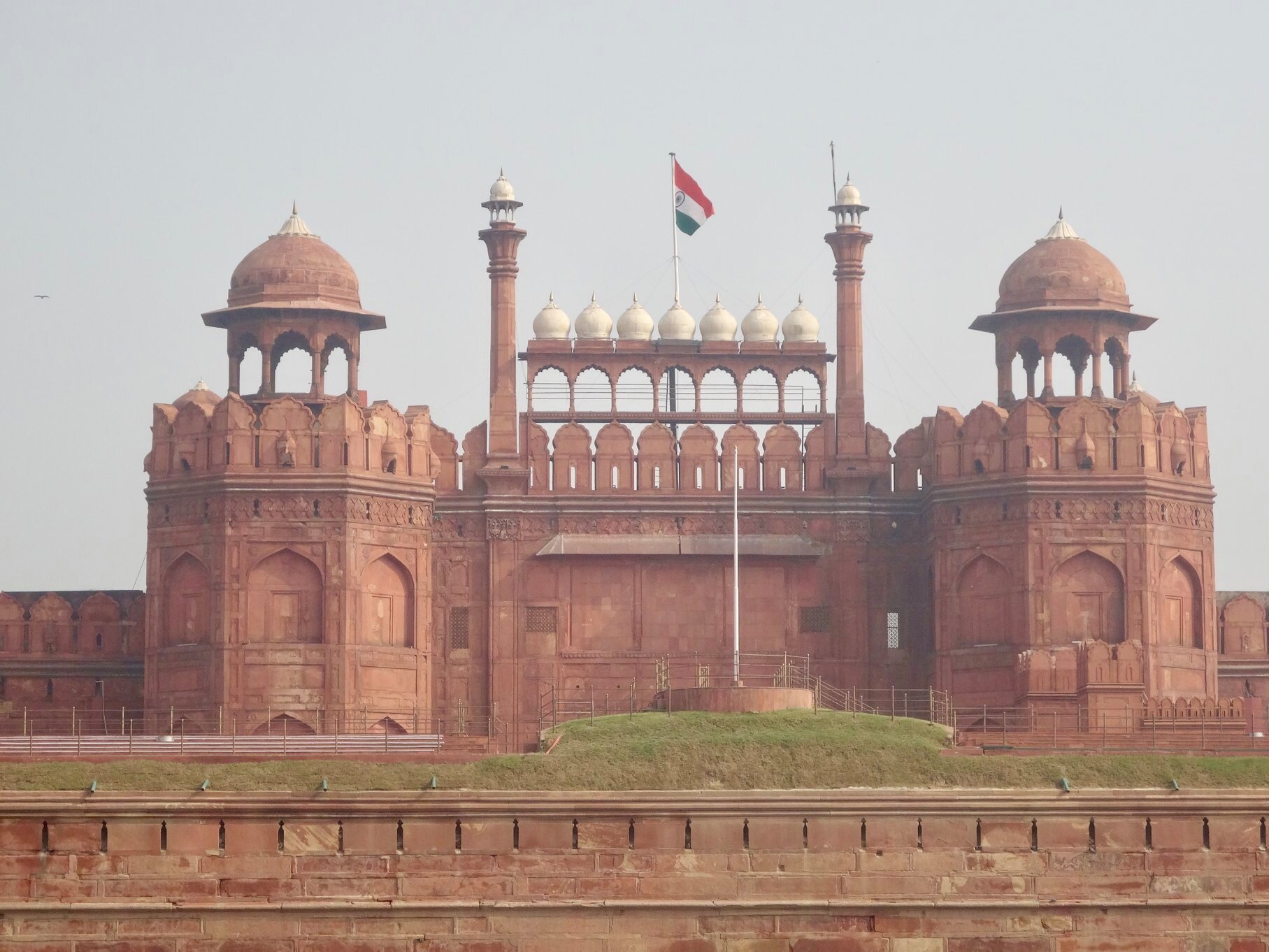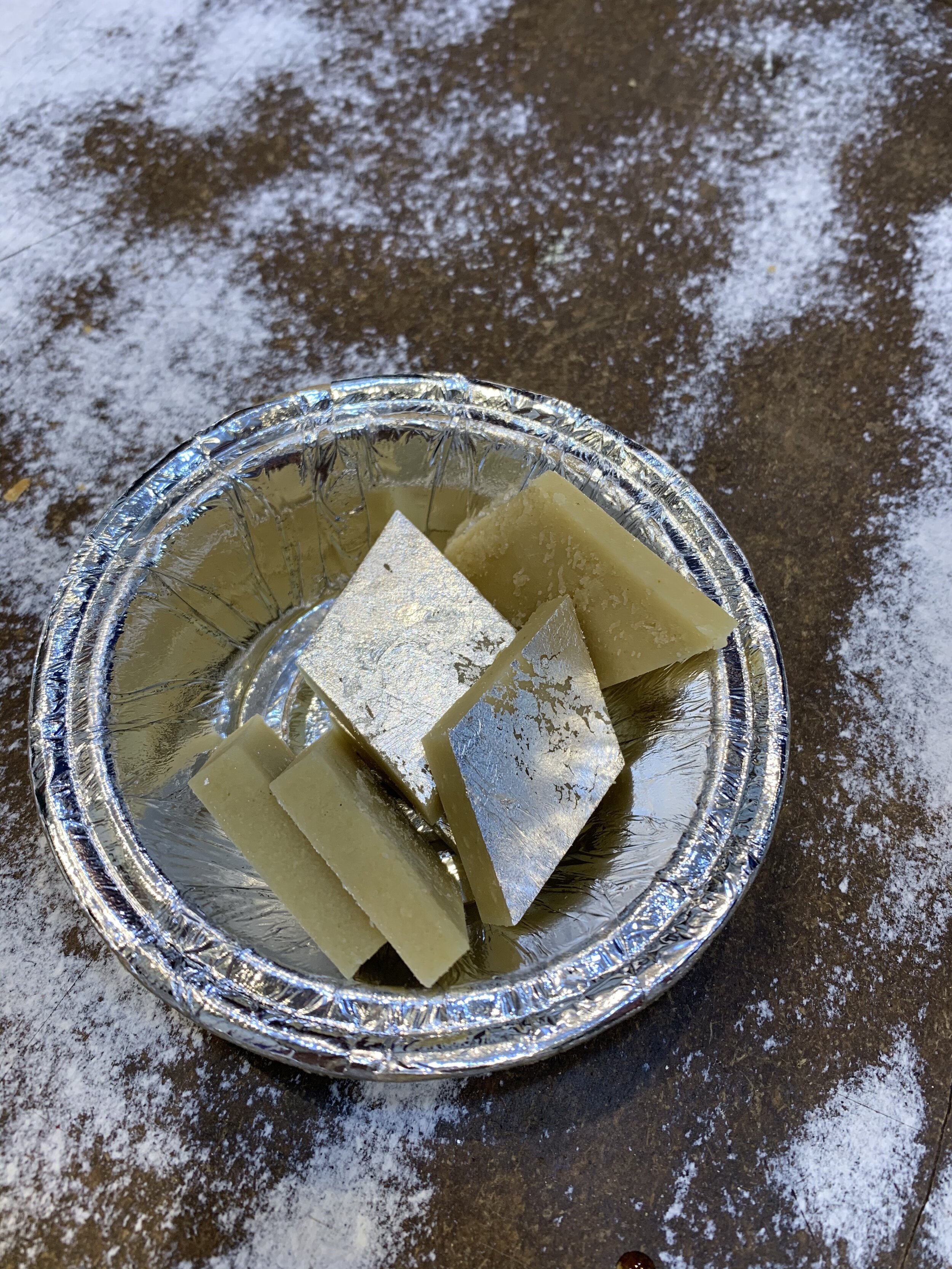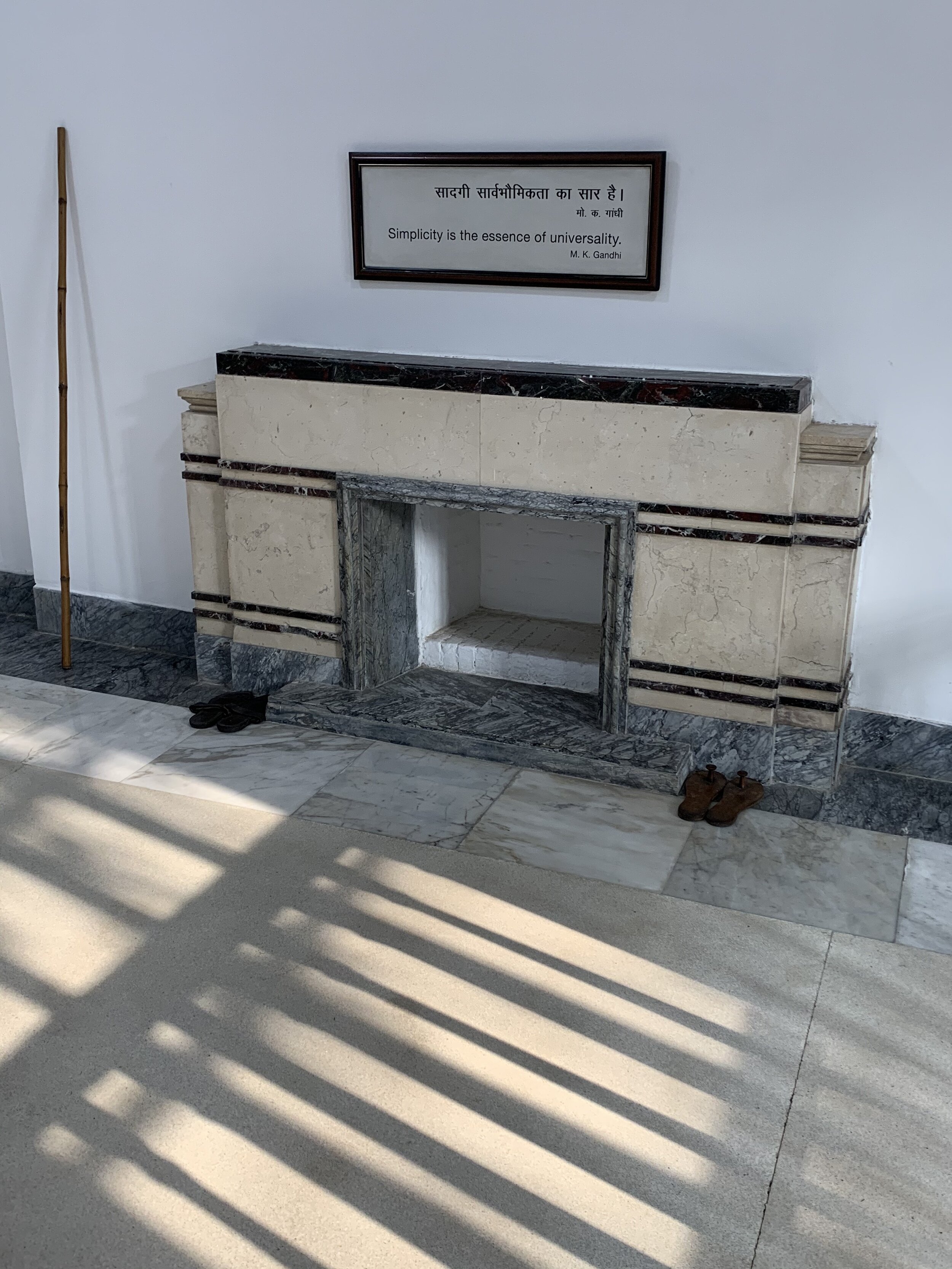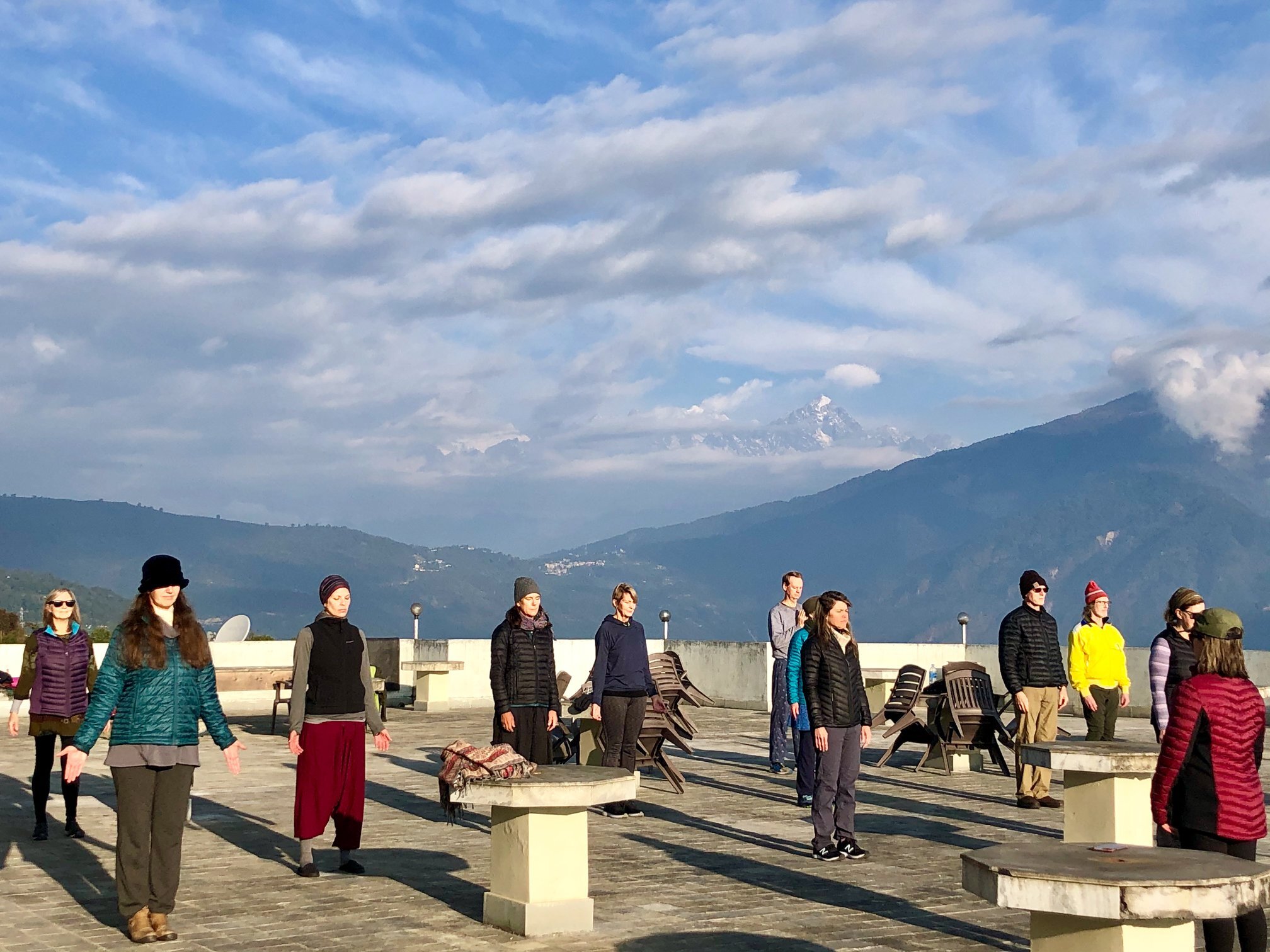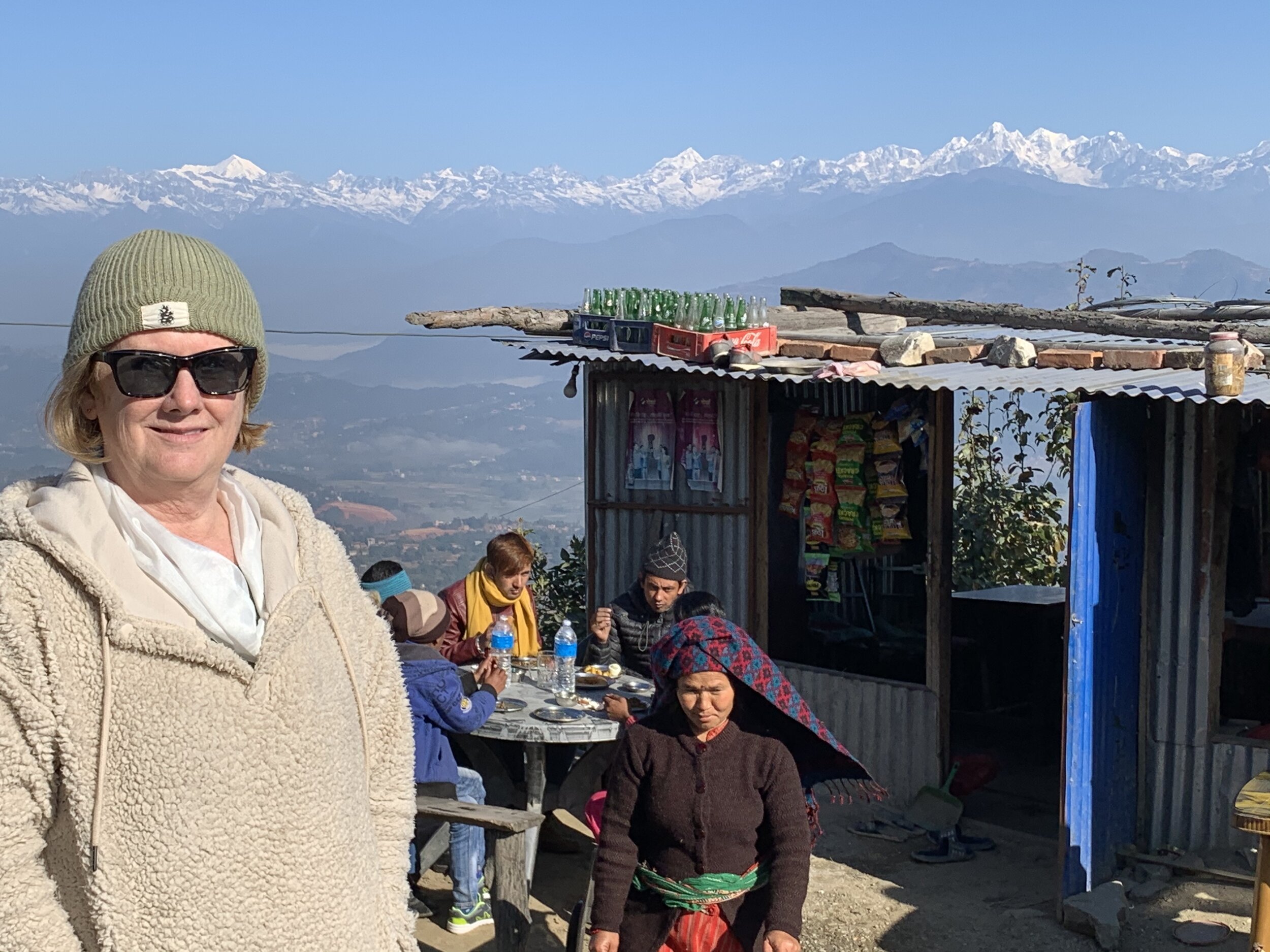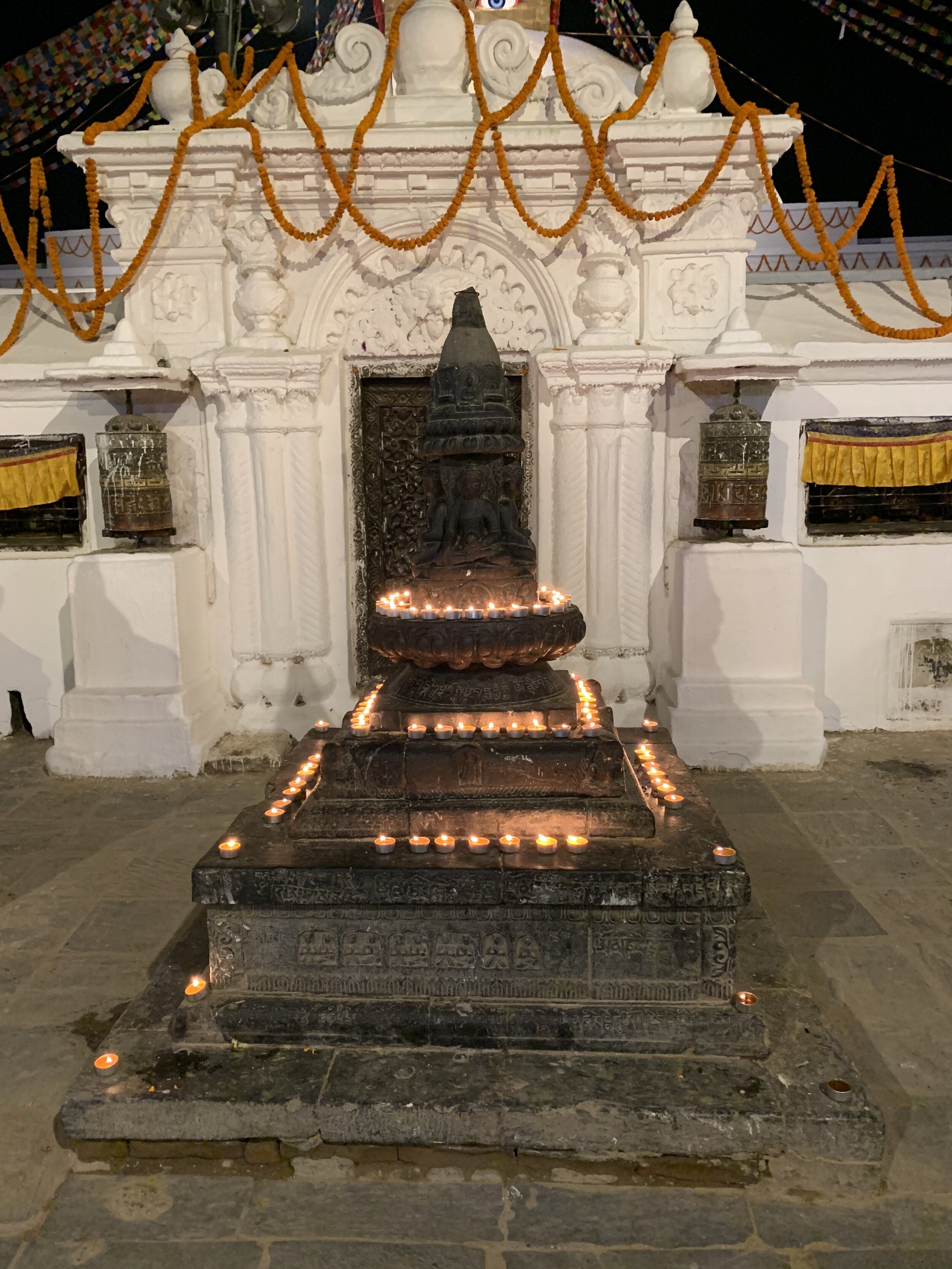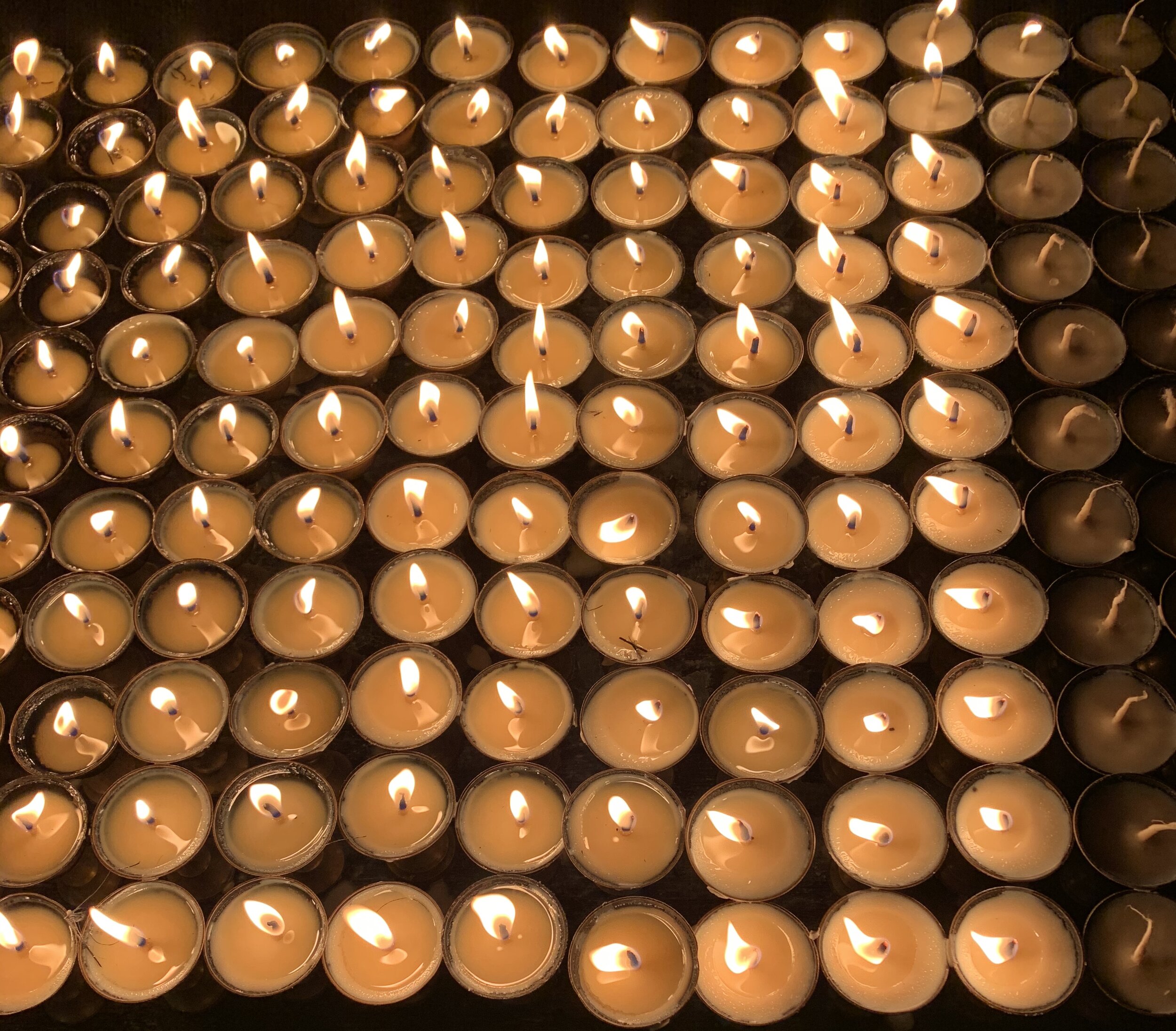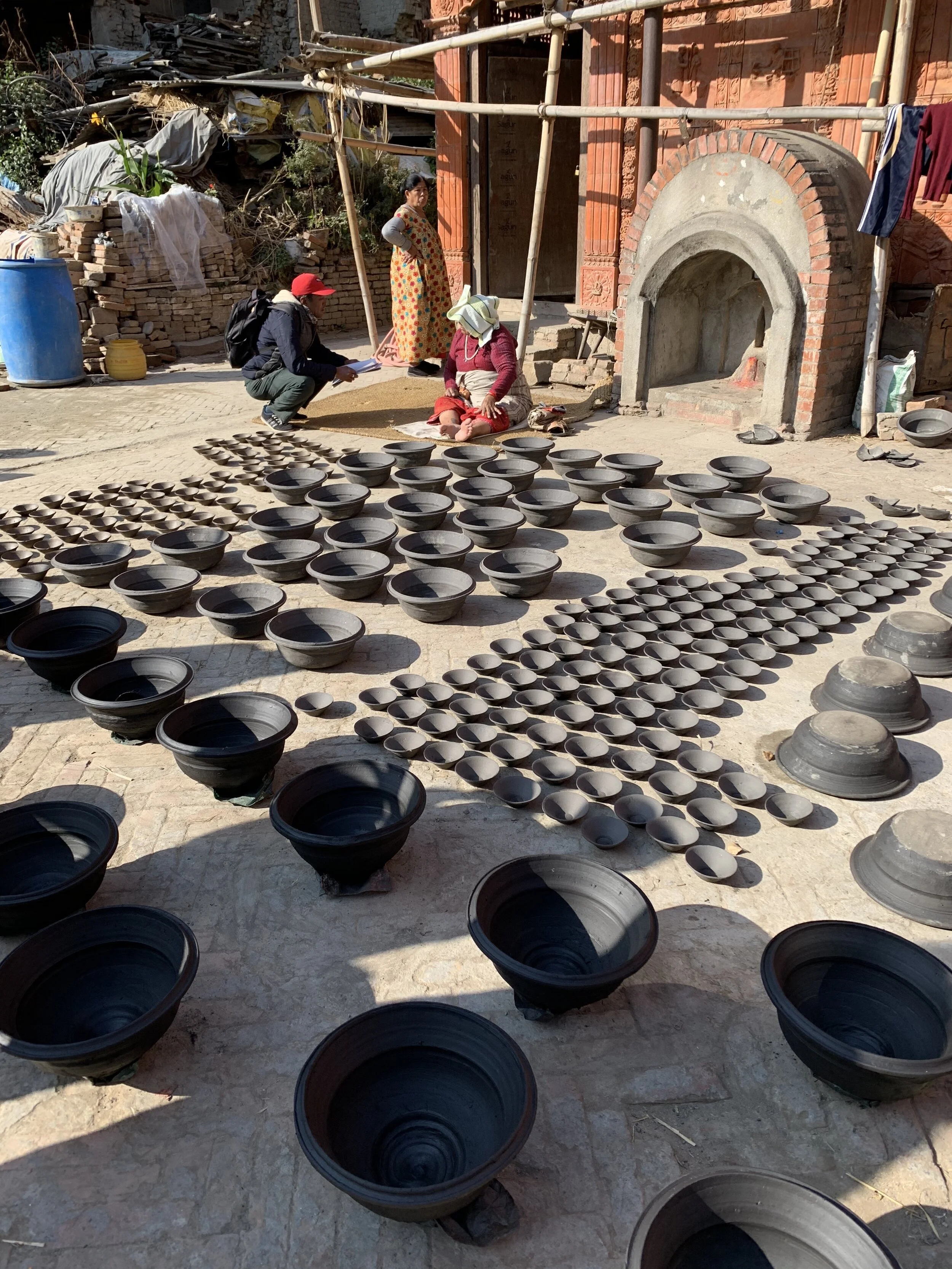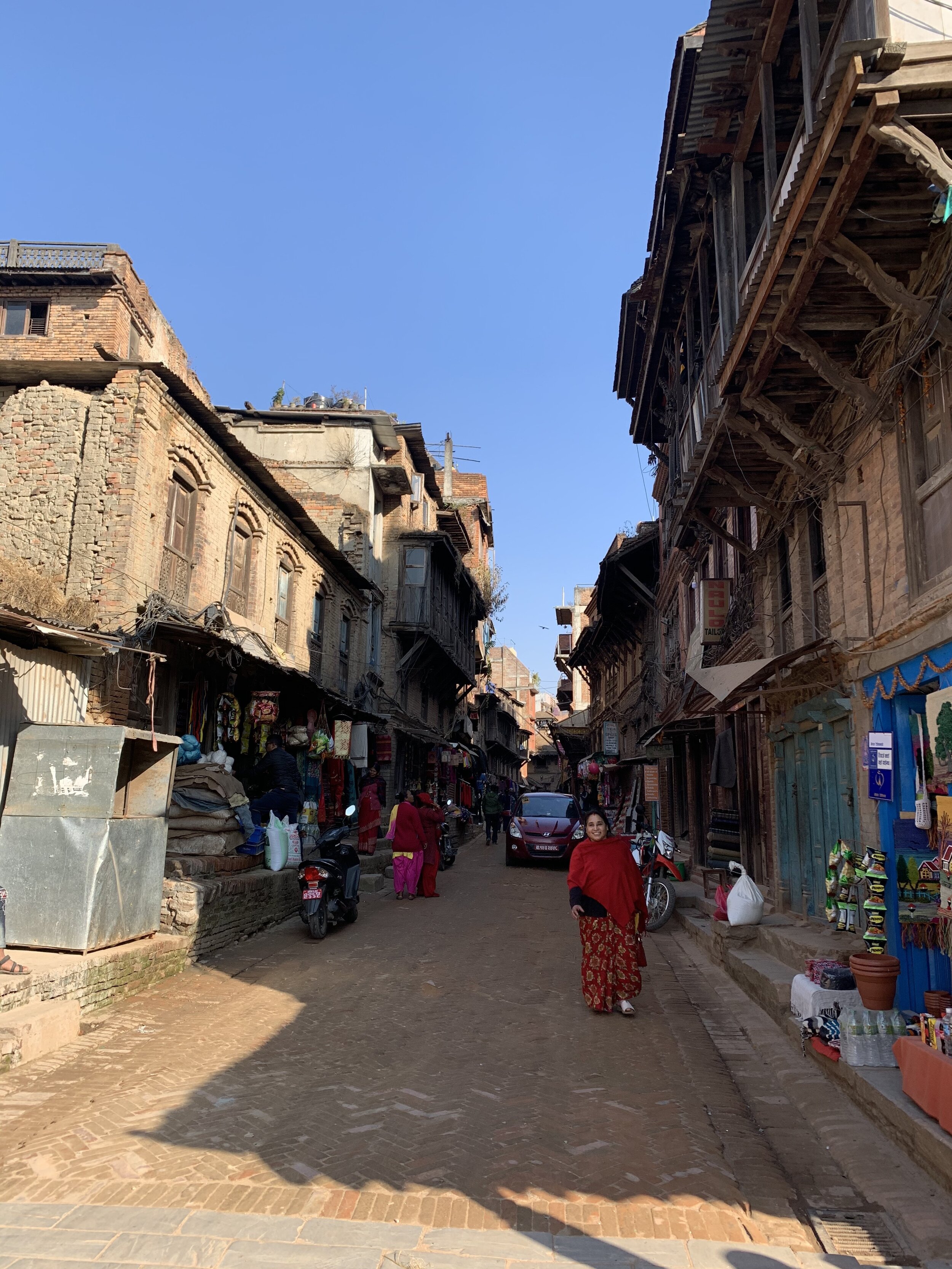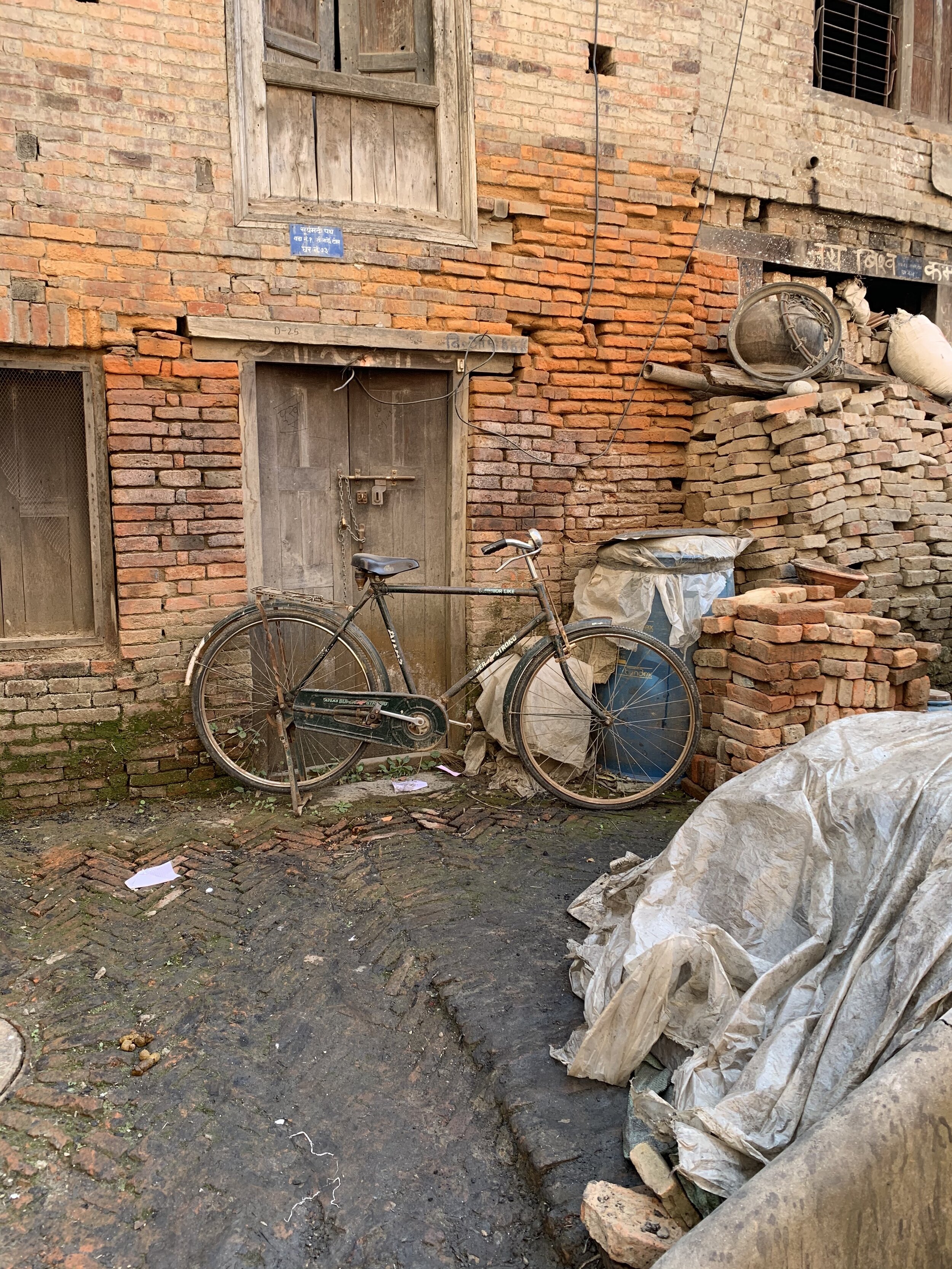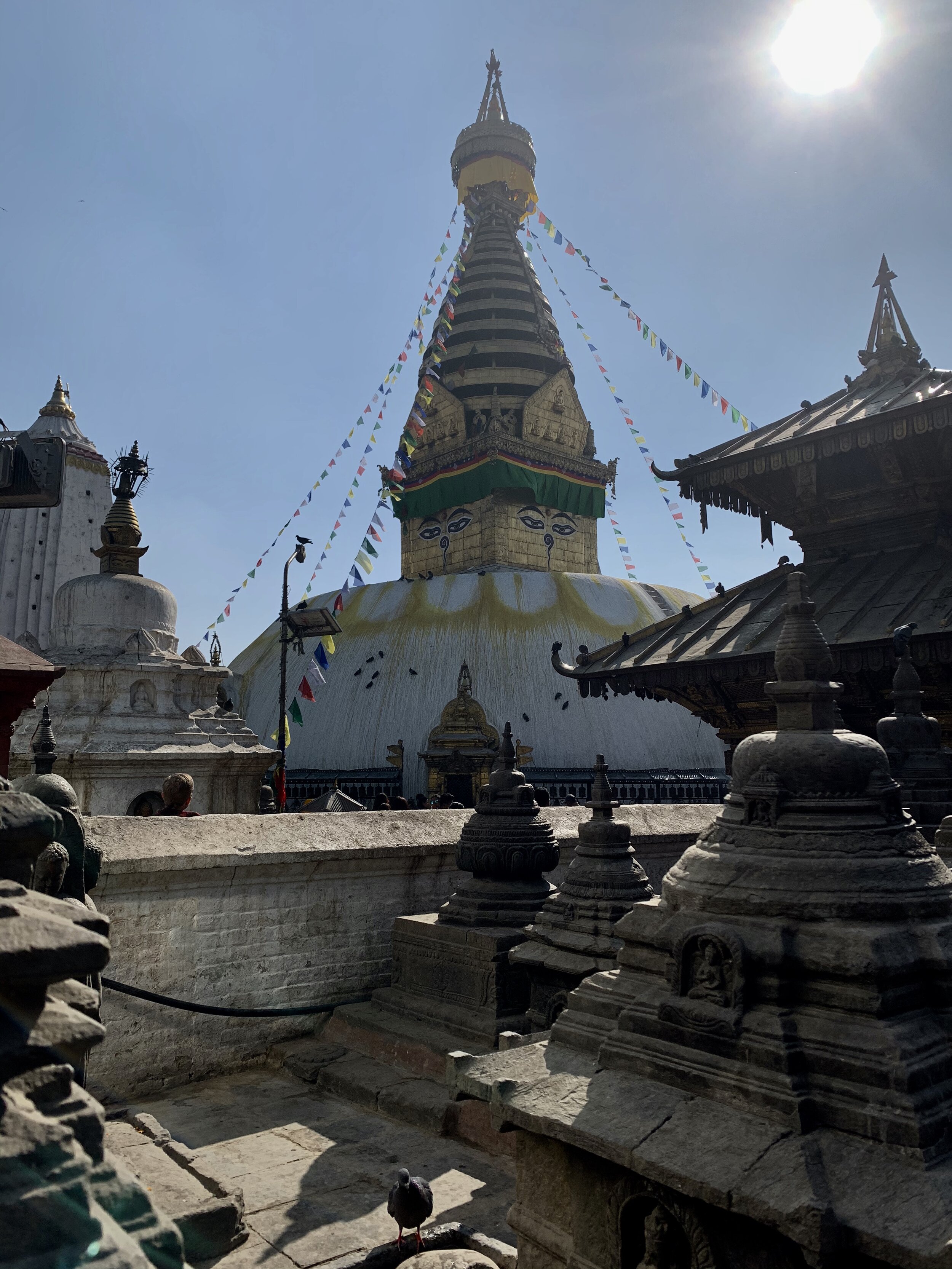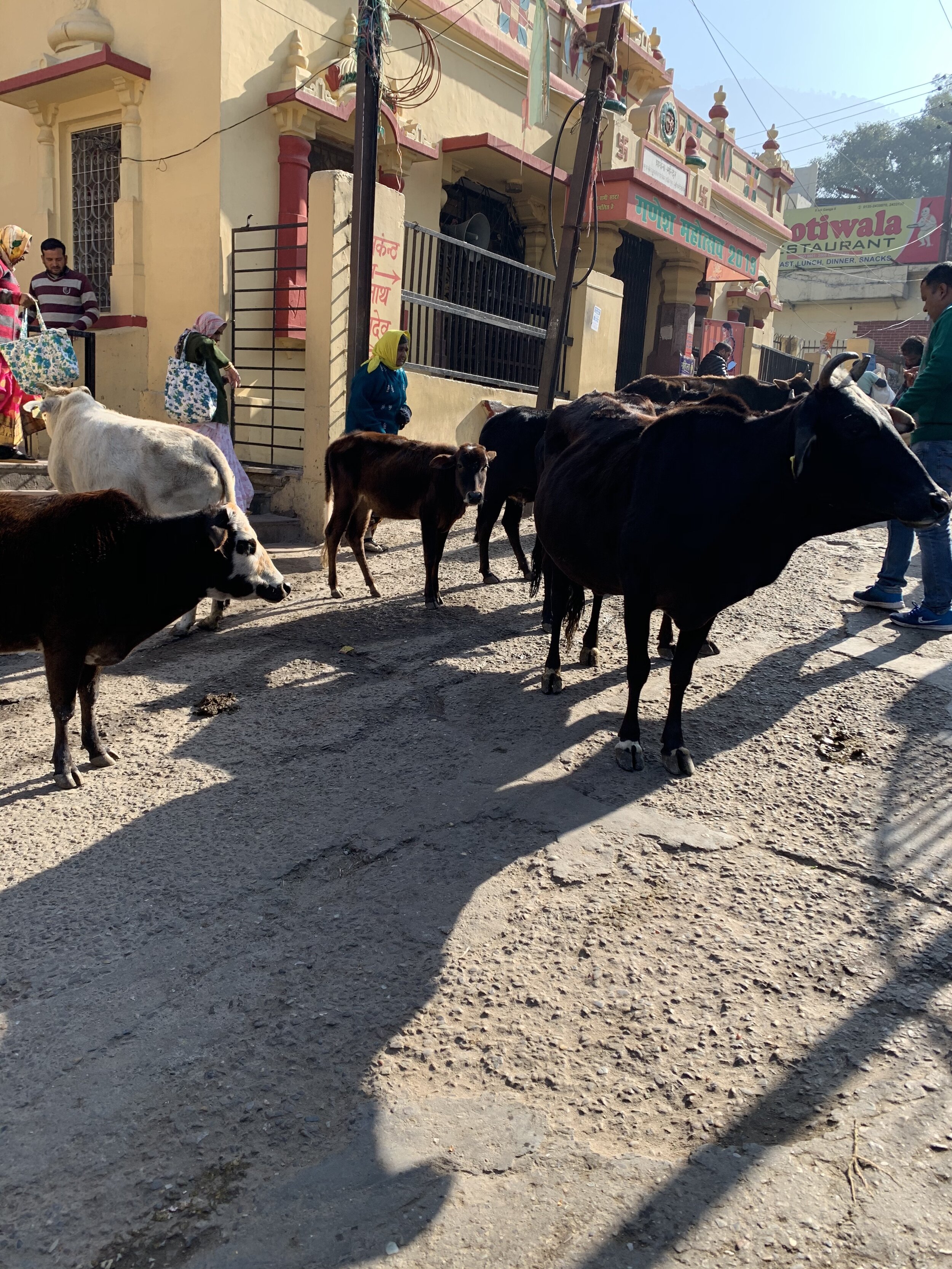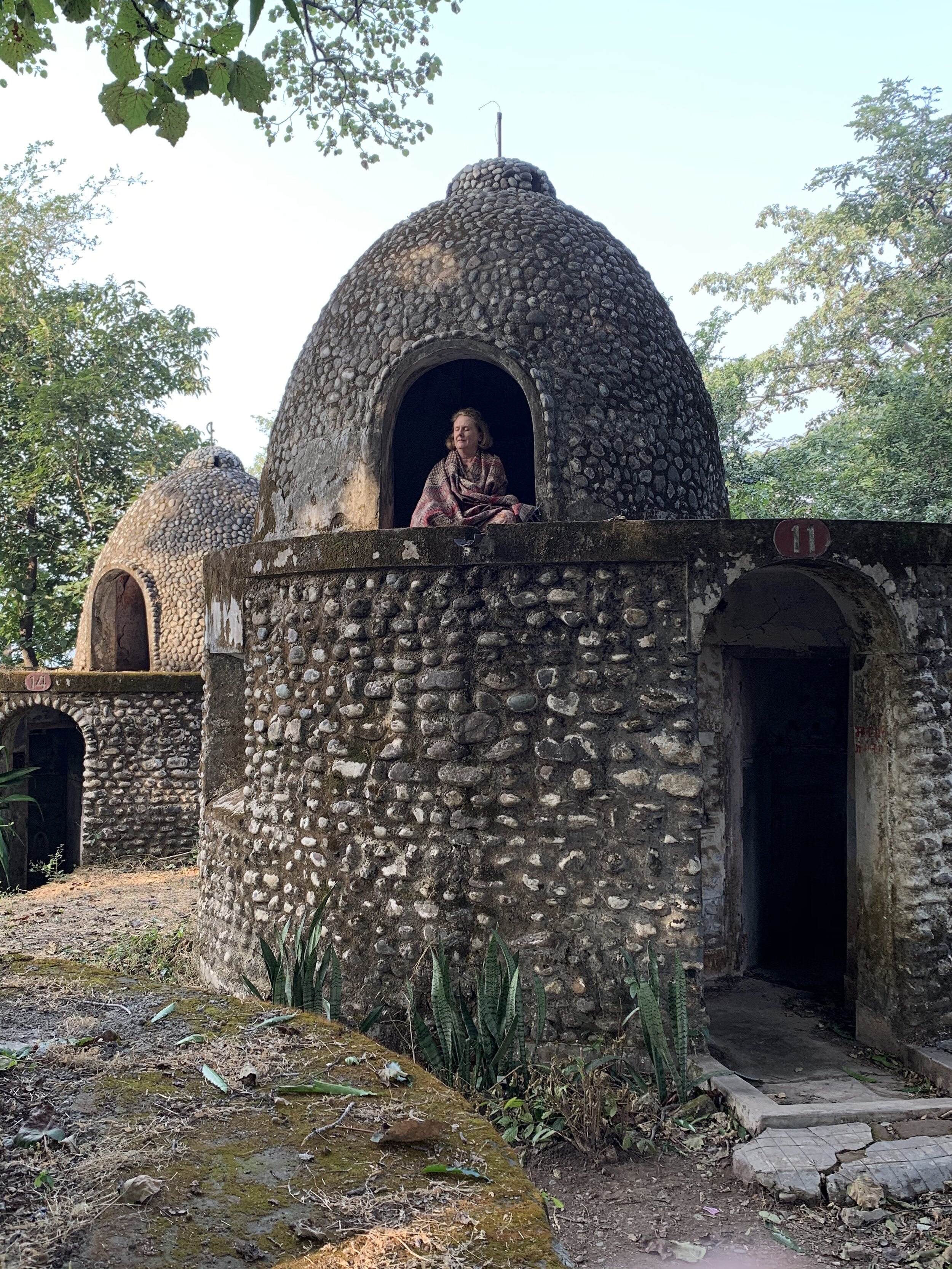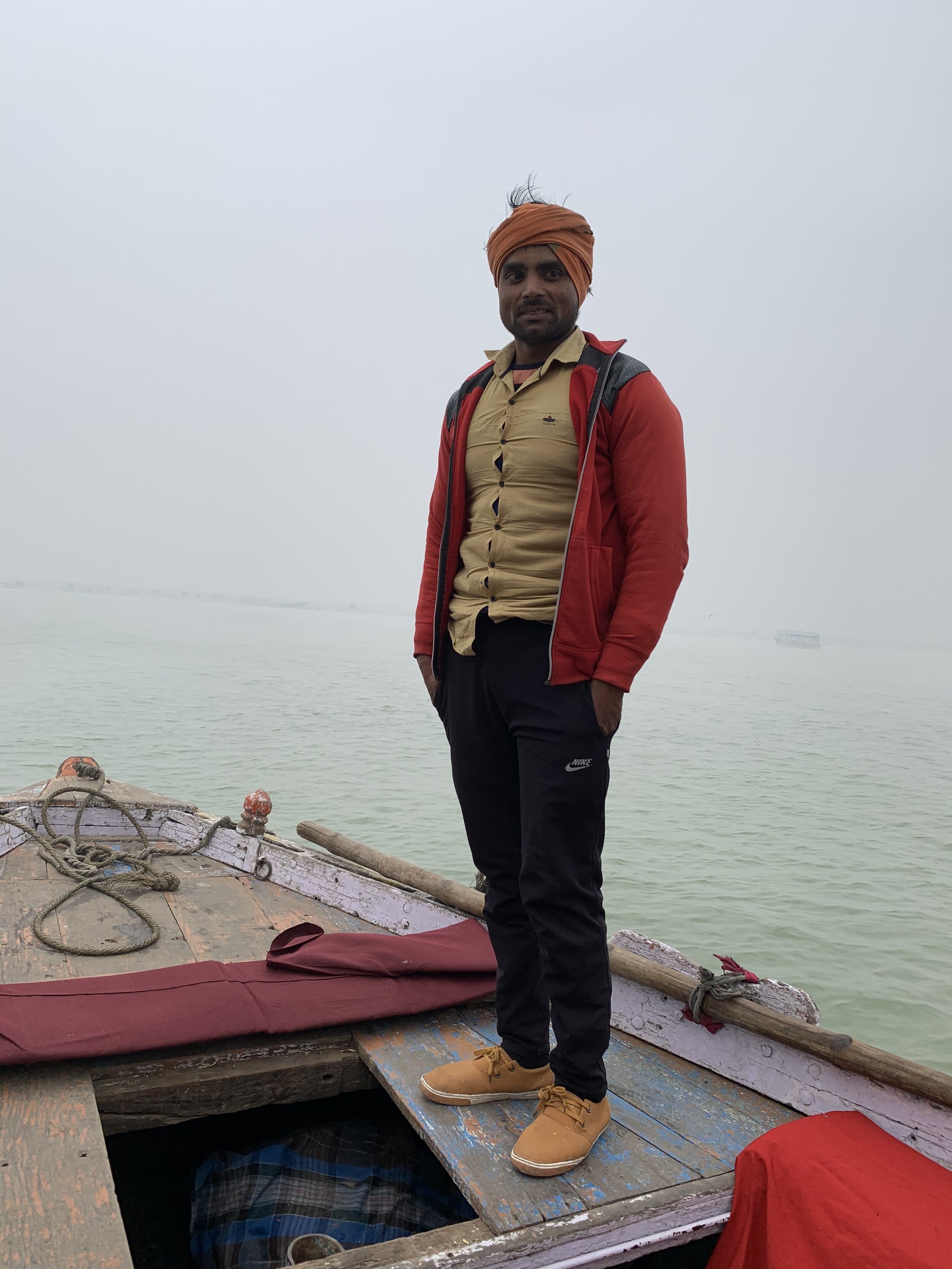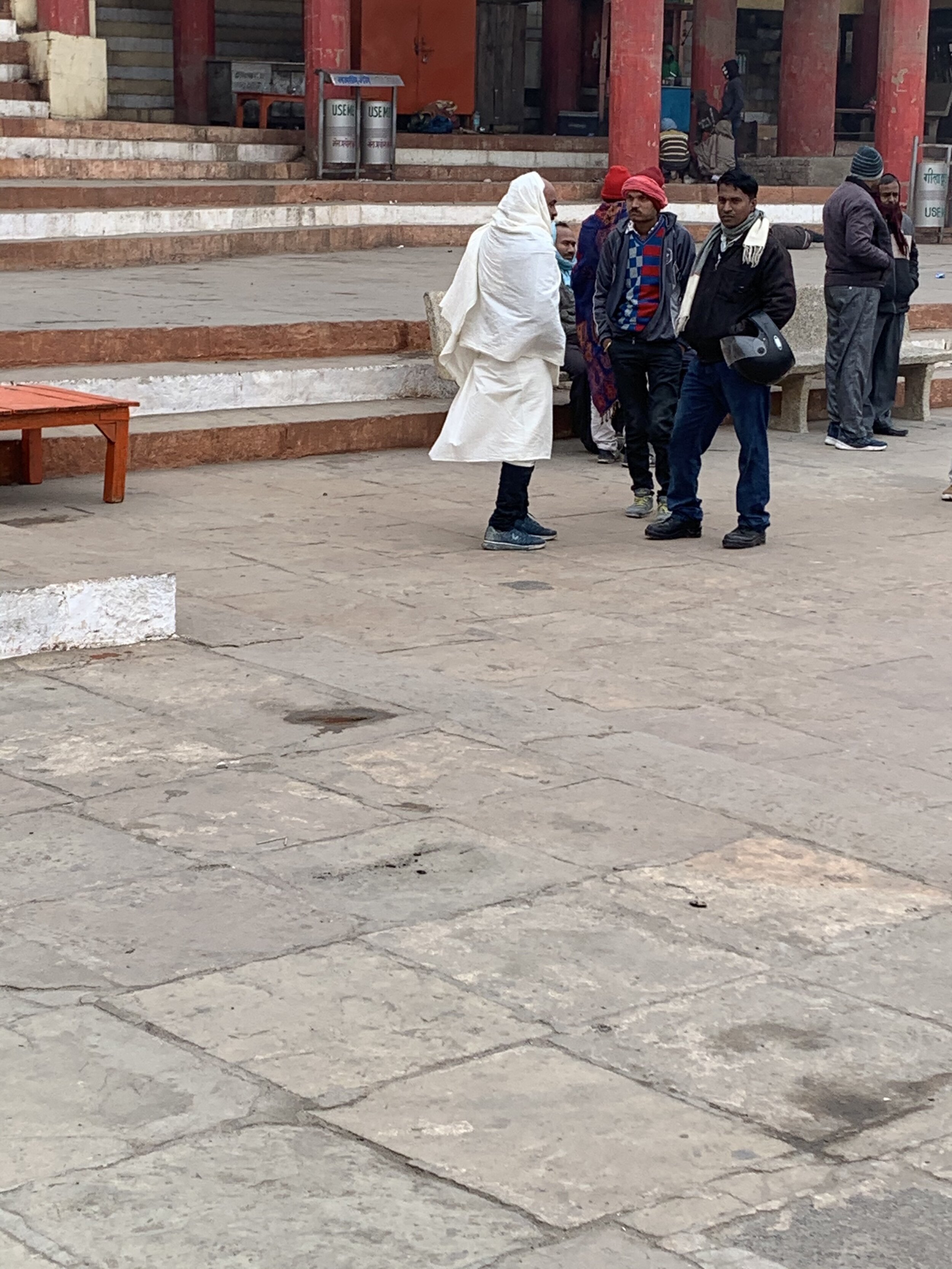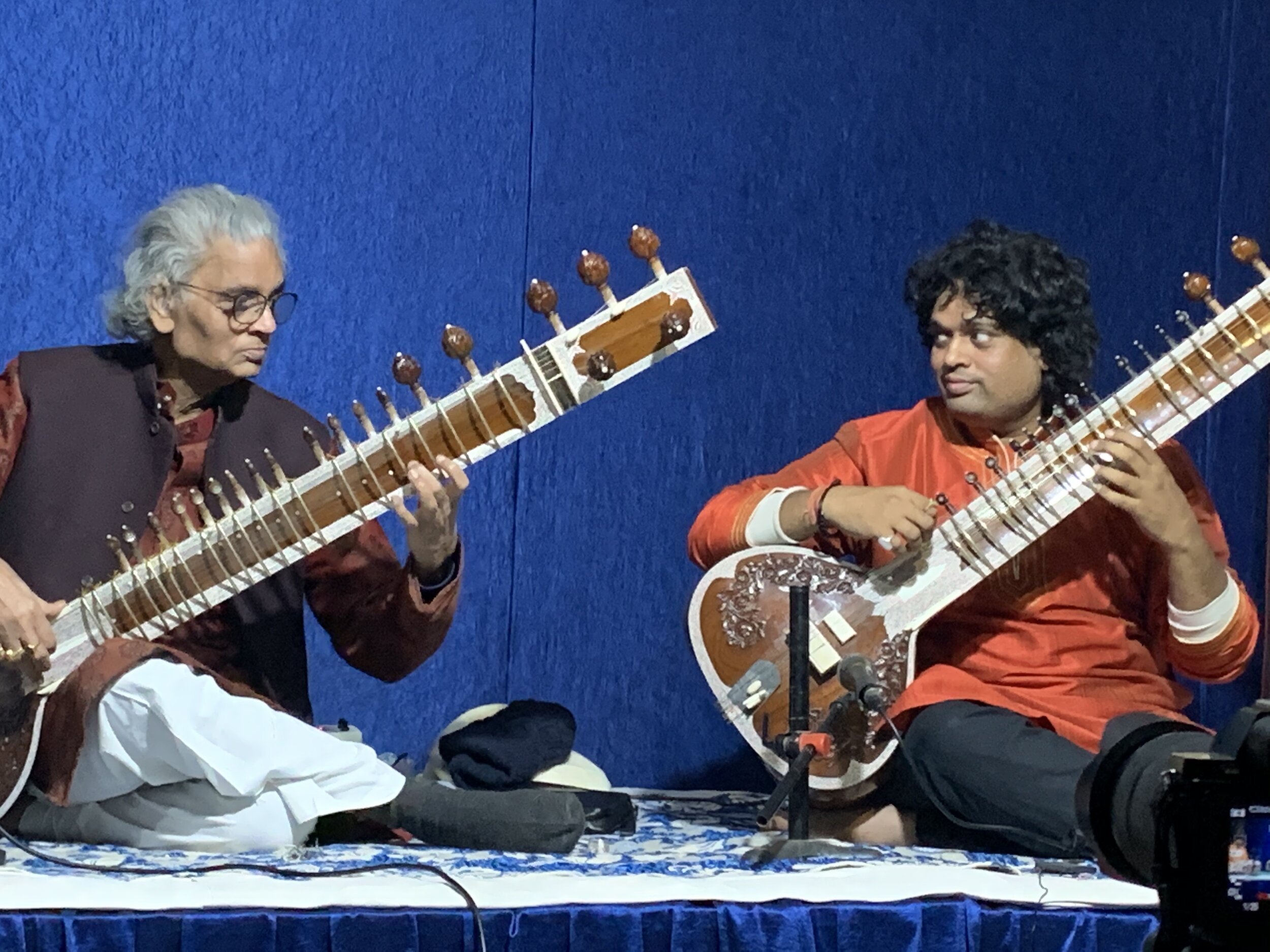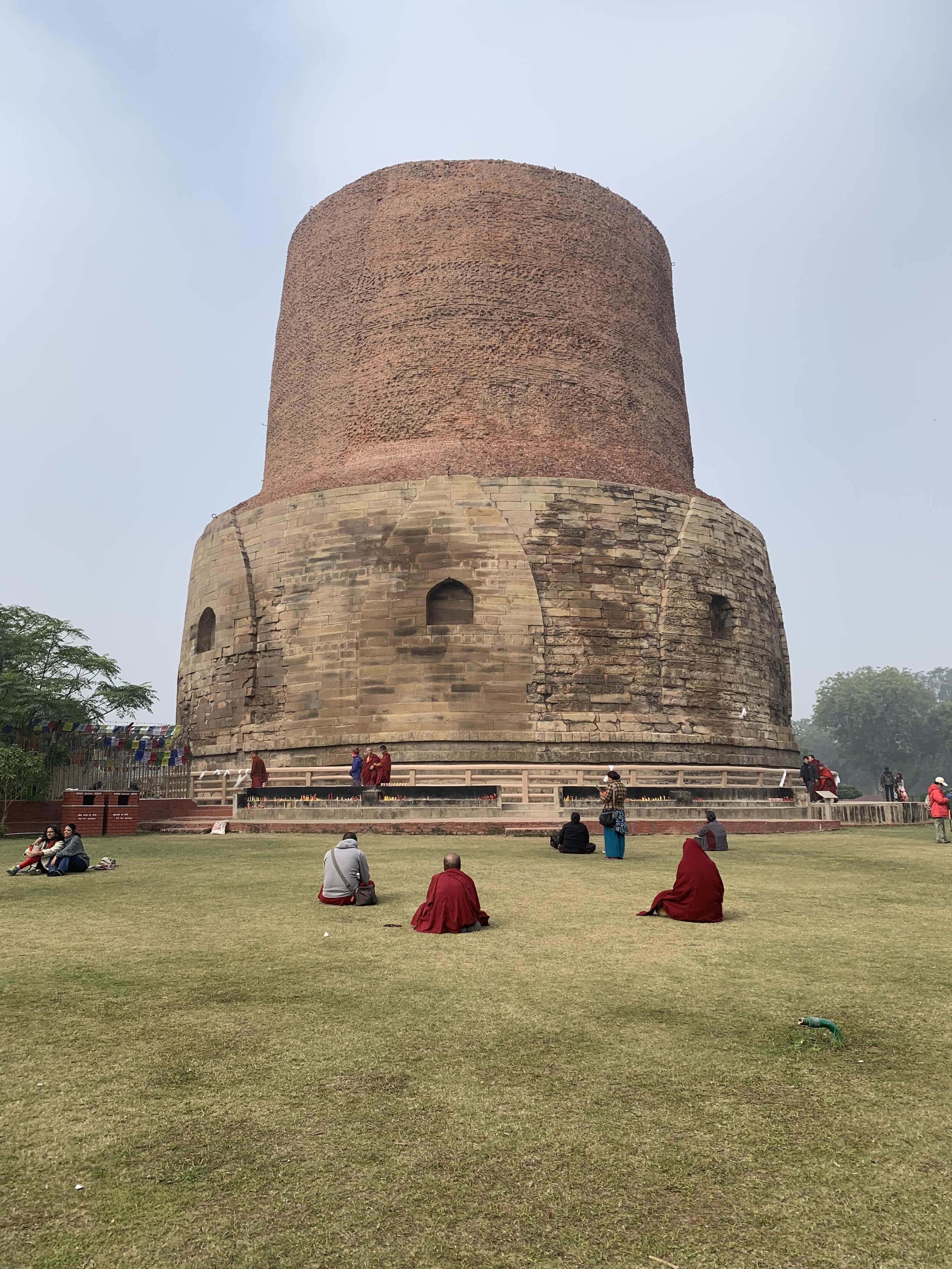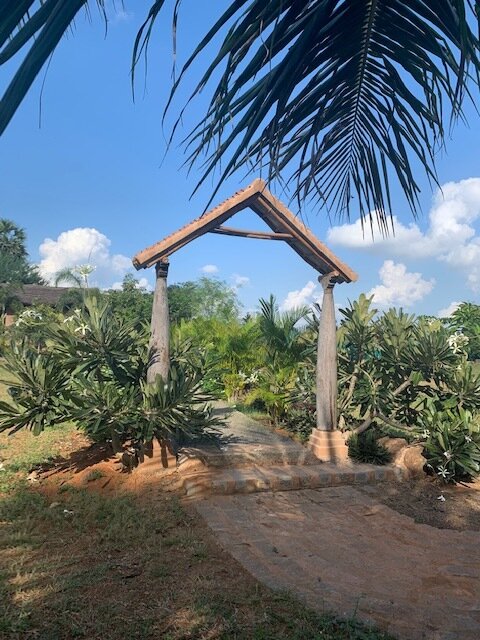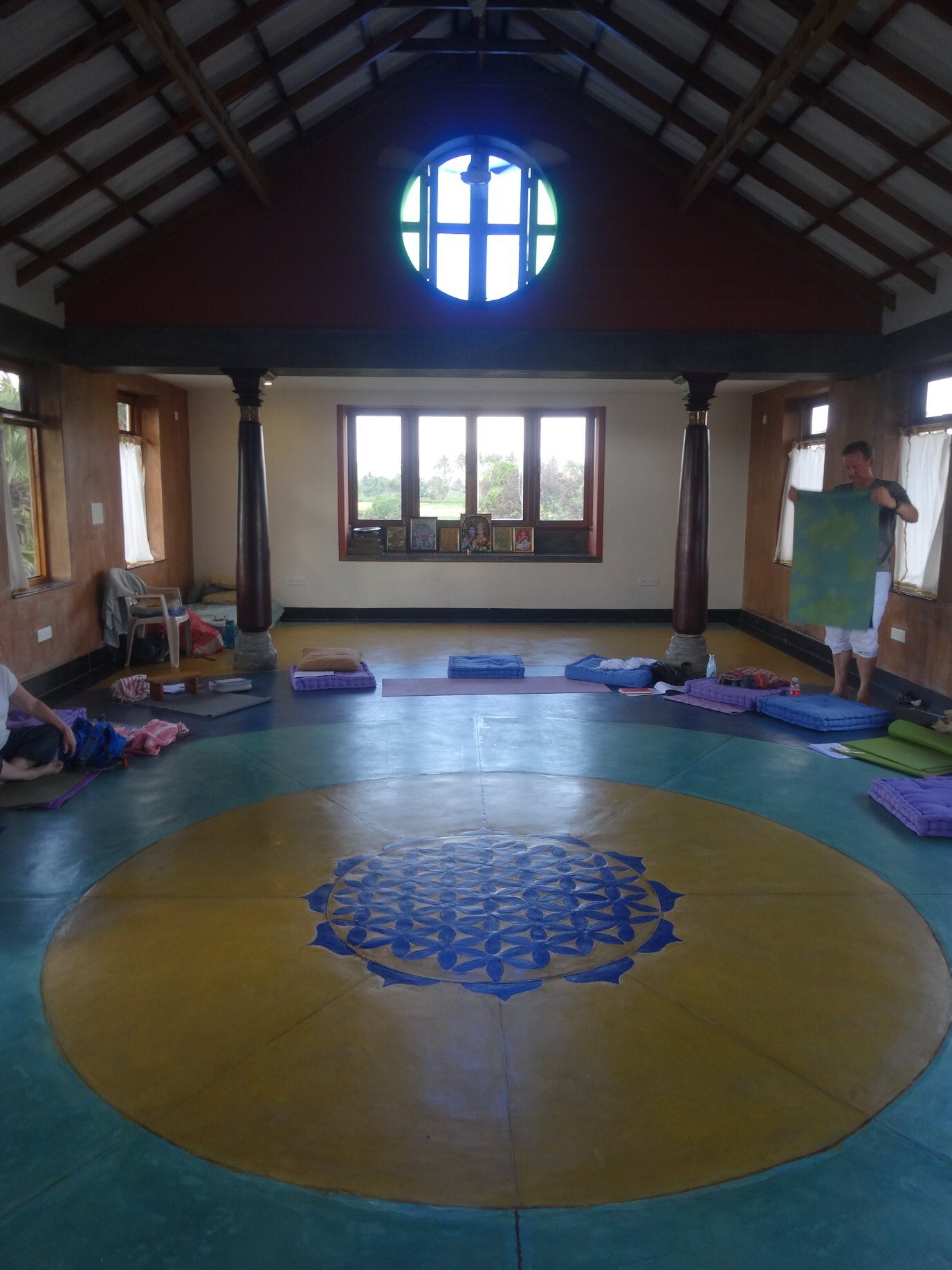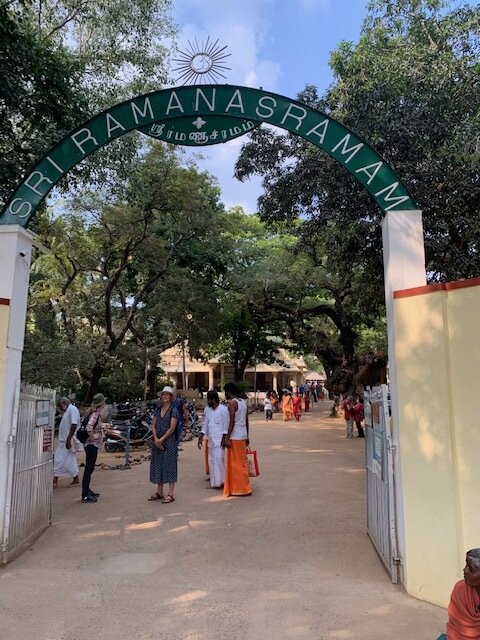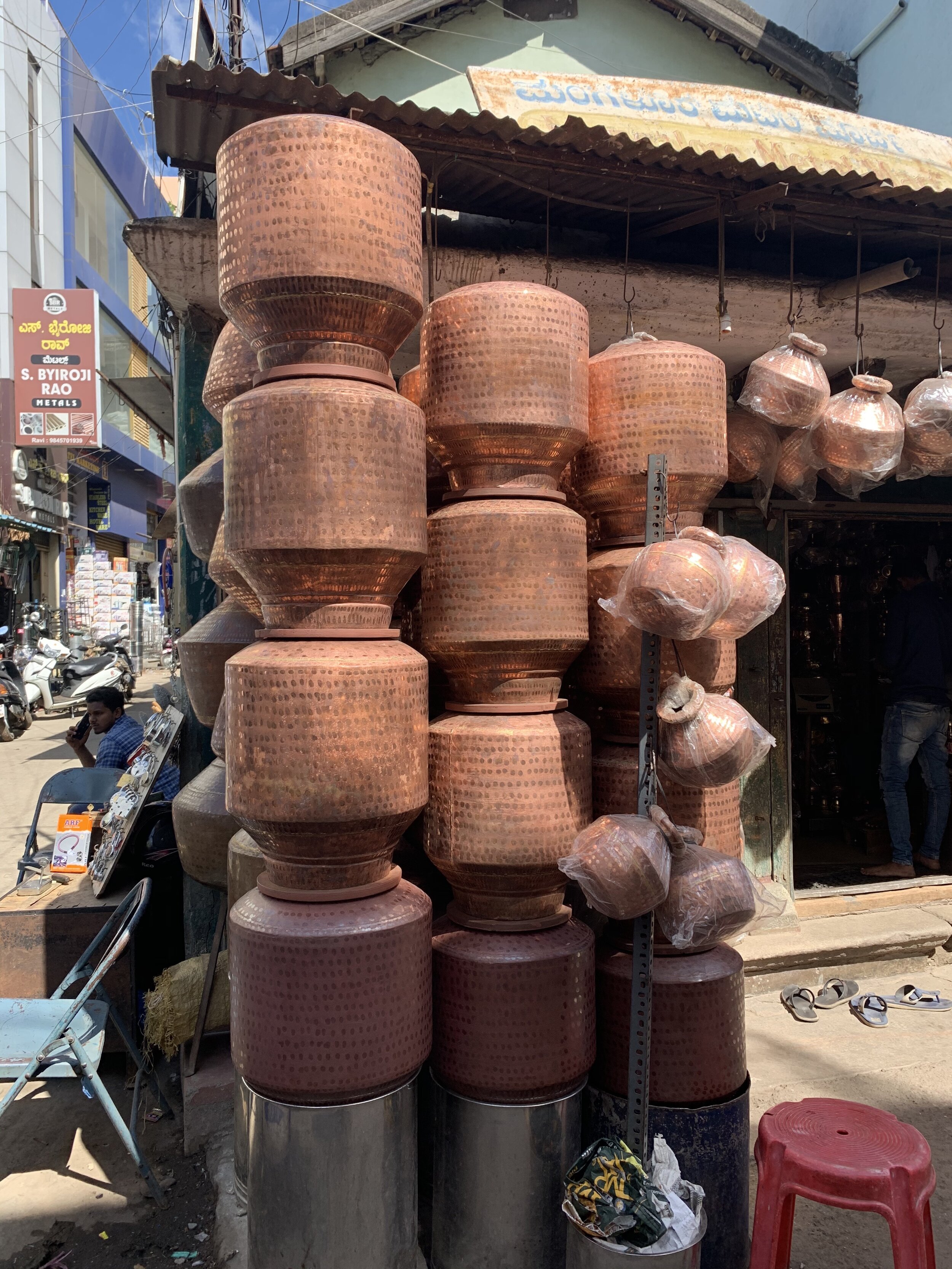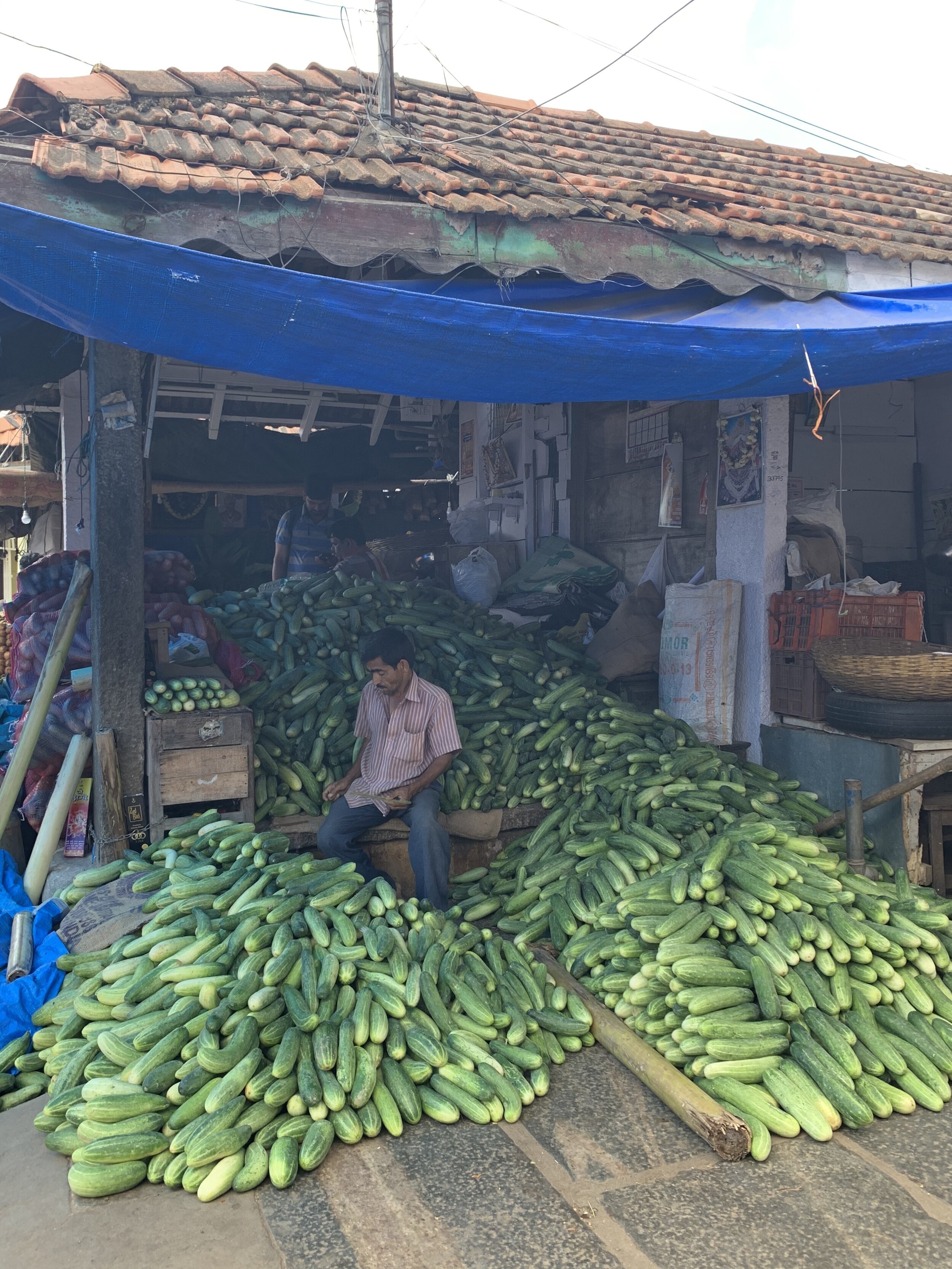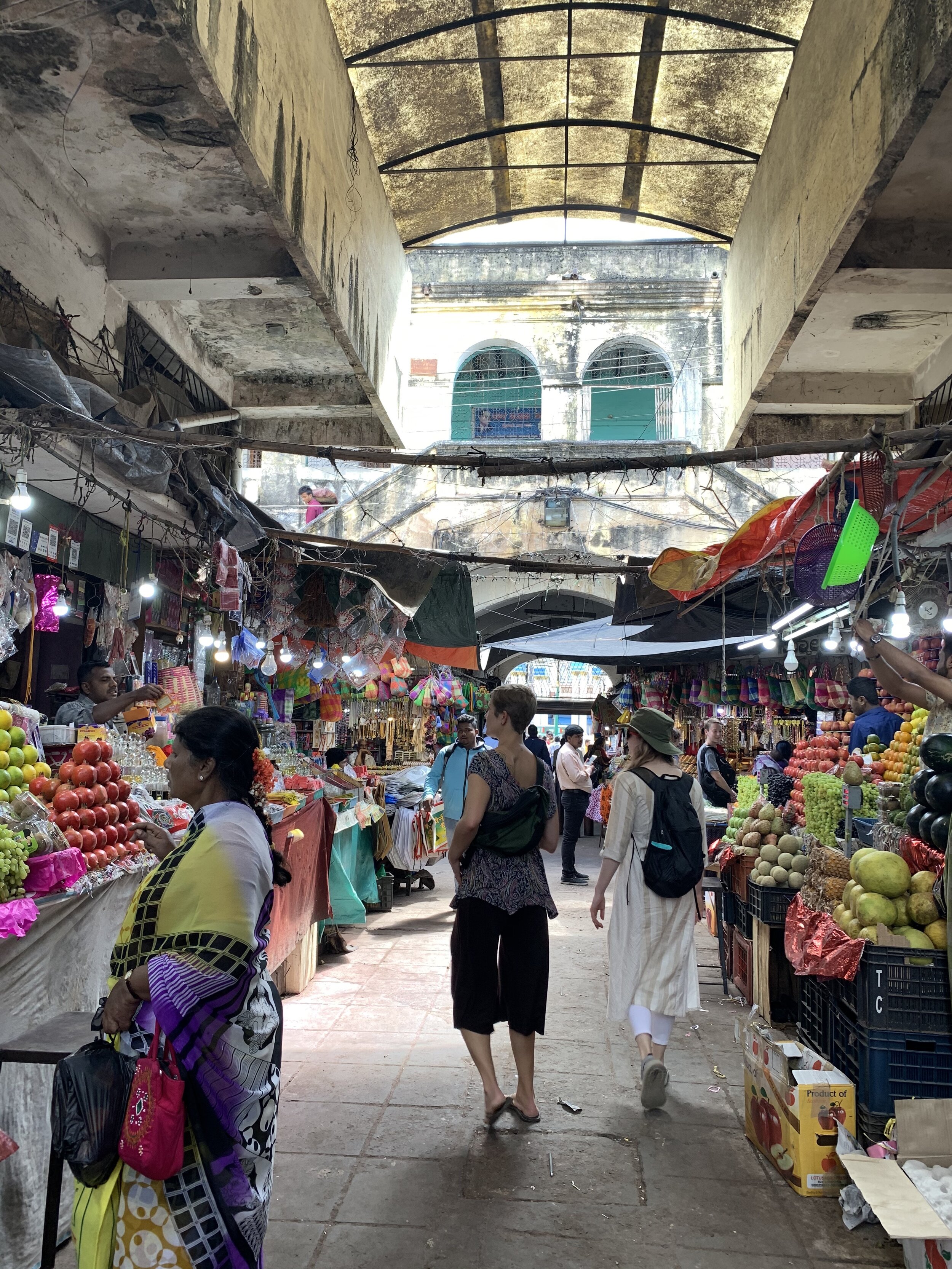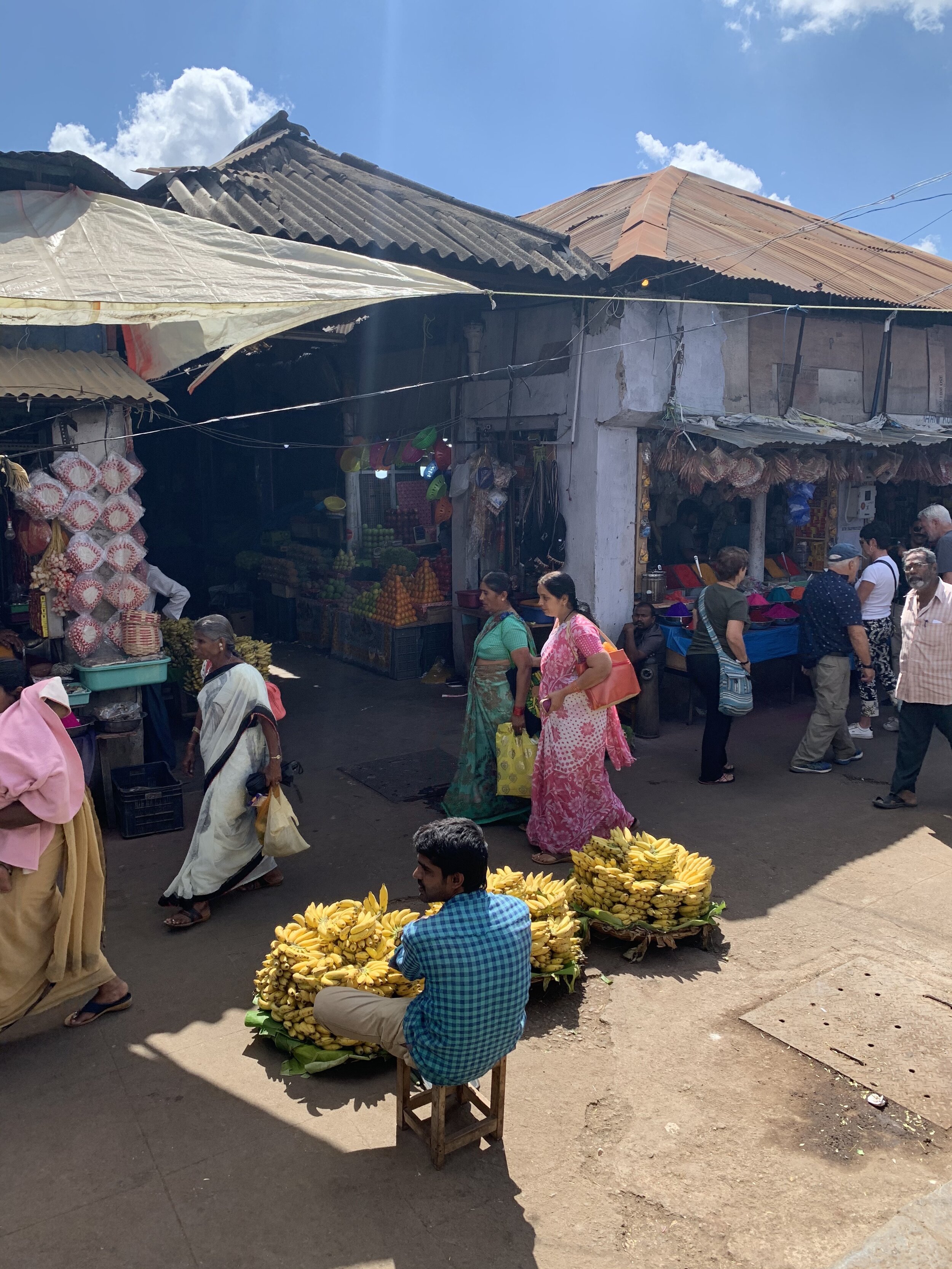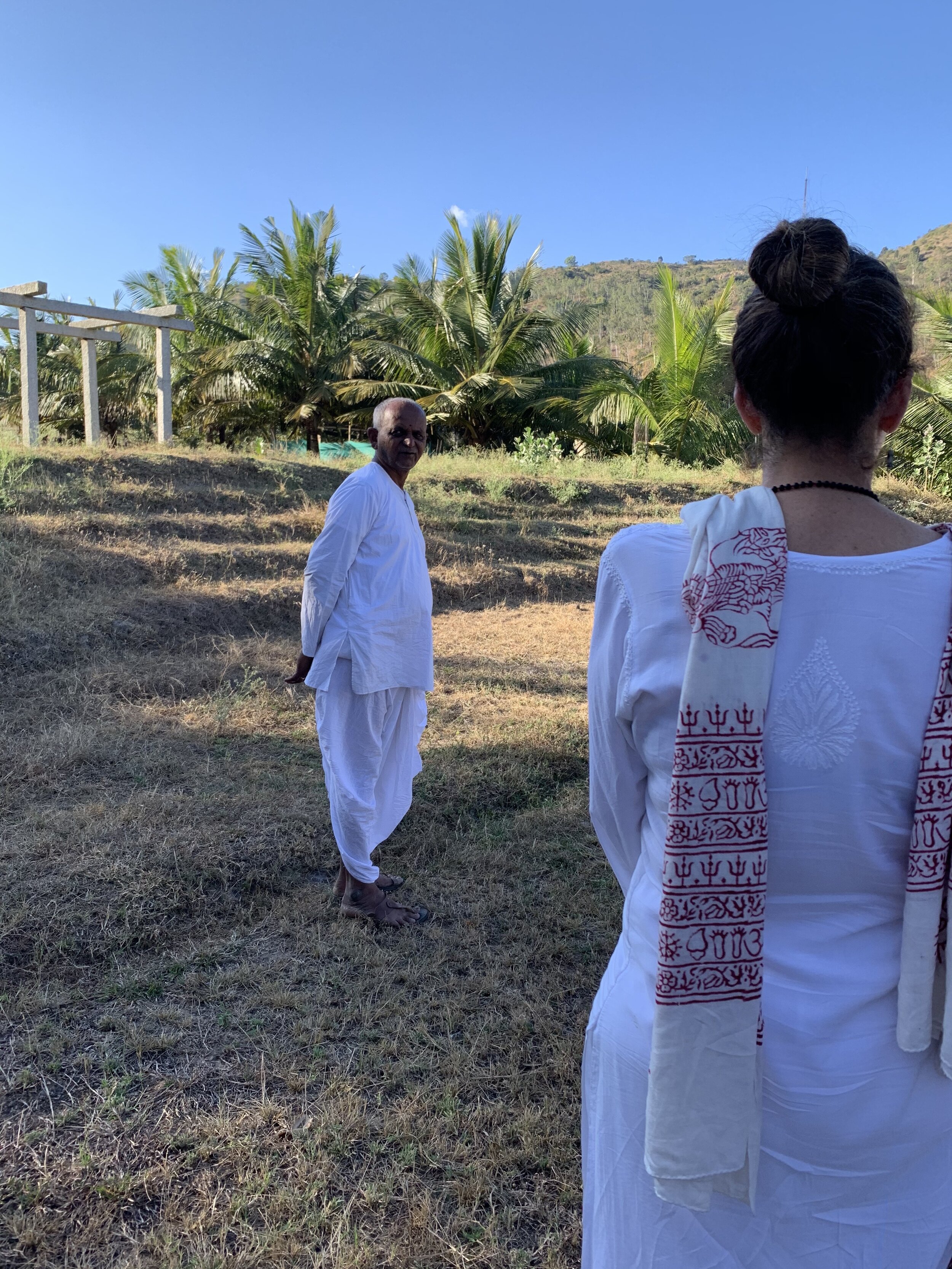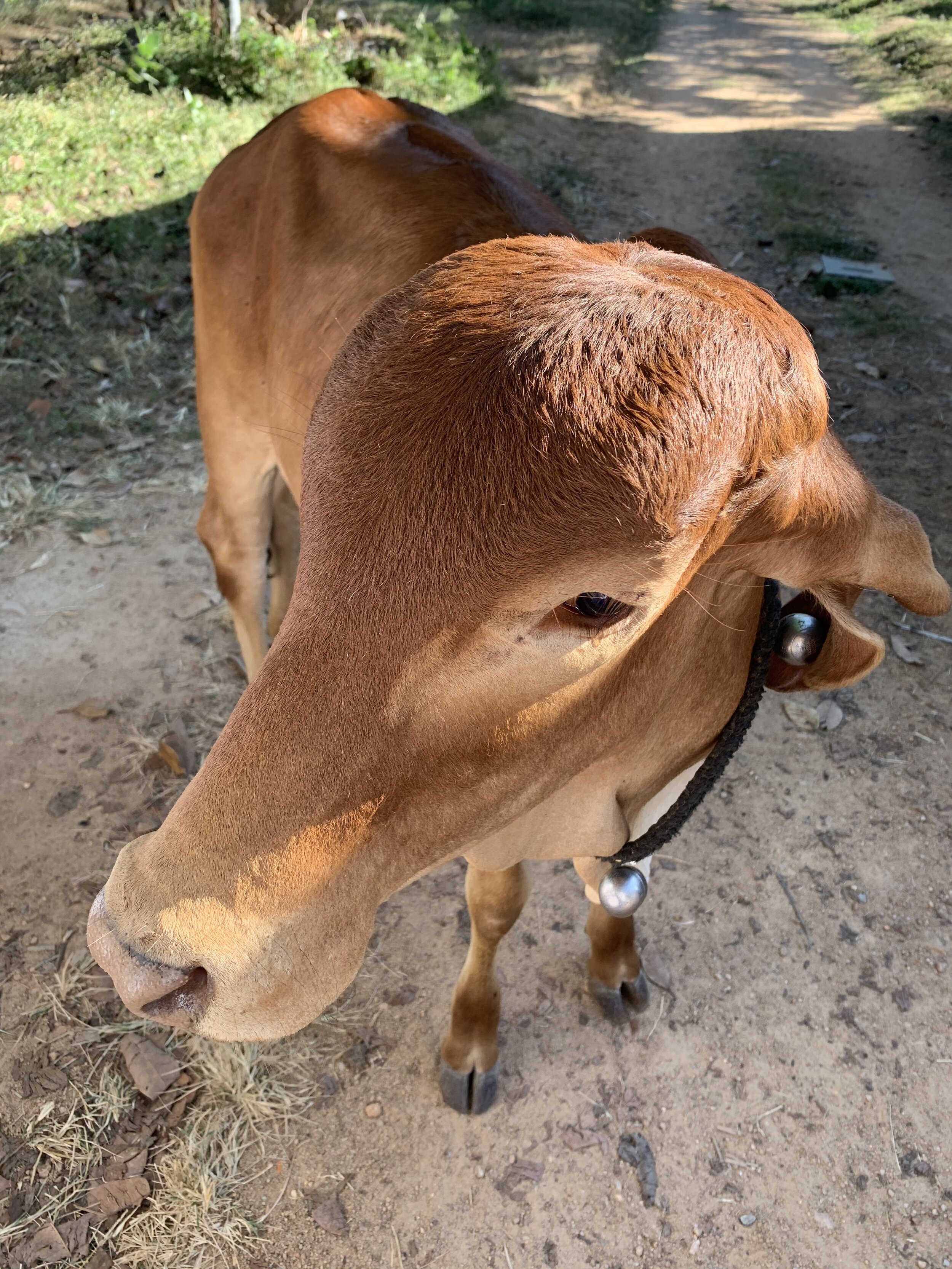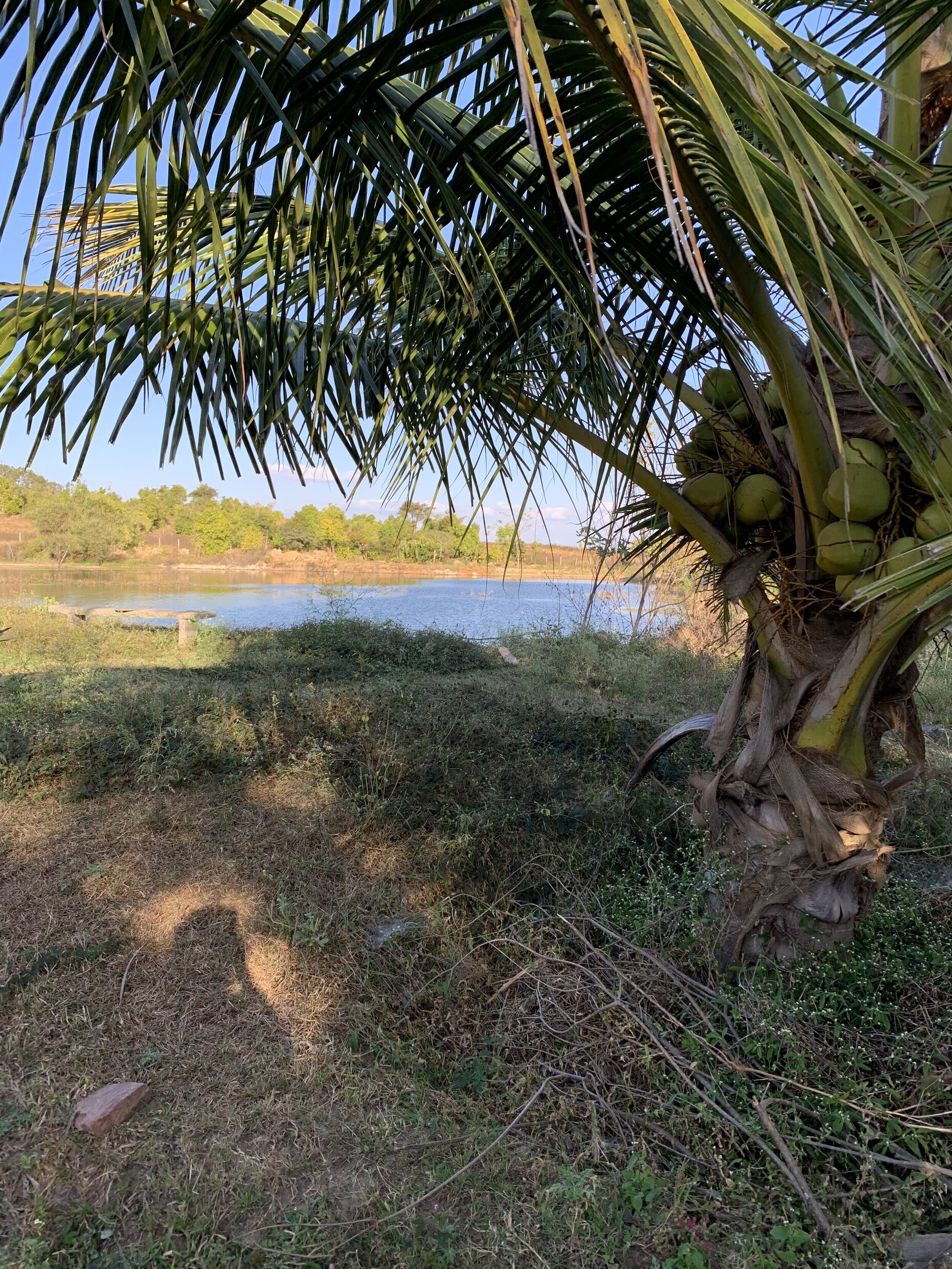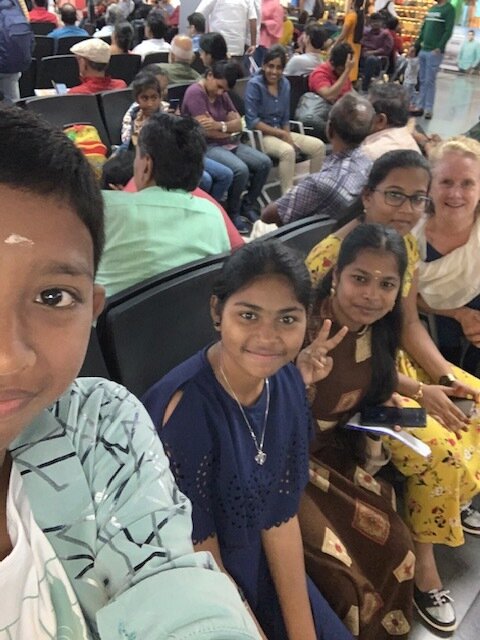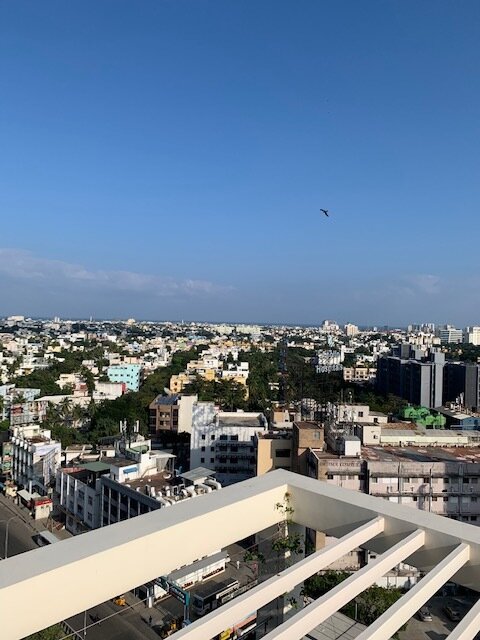This is a test run to see if I can set this up properly so I can share my pictures of India and Nepal. I’m not even packed. I have stuff all over the bed and the floor that I have to narrow down to what fits in a carry on roller bag and a small back pack. Did I mention that I’ll be traveling for 5 week? Ha!
I may have to ship back my cold climate clothes after Nepal to make room for a kurta or two and gifts. No one is getting a harmonium this year. Let me know if this worked in the comment box.
Well, it was a good plan, but I rarely had wifi and/or time, so here we go - a little after the fact. I arrived in Delhi, but not my bag, to a brothel in the red light district near the airport. My driver warned me not to go out until morning. It wasn’t the plan, and I’m sure the person organizing our Delhi jaunt had no idea what she was getting us into. After 27 hours of flight and getting in at 2:30 am, I really didn’t care what was going on in the other rooms. I just needed to sleep.
Day one was spent finding breakfast, buying some clothes for the next few days, exchanging money, making many calls to Cathay Pacific to try to get my bag and waiting for the other 2 “Delhi Devas” to arrive.
Every time a new person arrived the front desk got me up to meet them. I was a little cranky by the time the last two arrived. I got about 4 hours of sleep and then it was time to rise early, 2:30 am again, to meet our driver to Agra to see the Taj Mahal at sunrise.
Sunrise really is the best time to visit the Taj. The light is perfect for taking photos, there are flocks of birds swooping through the gardens and there aren’t many tourist.
Our driver, Bobbi, was sound asleep when I found him parked near the hotel and it never got better. I was riding shot gun and kinda felt responsible for our safety. I tried conversation, singing the Gayatri Mantra with him and then just plain old barking at him when he nodded off and swerved into oncoming traffic. He was using coffee and Pan Masala (a stimulant one puts in the upper lip) to stay awake. Pan Masala is kinda like chew. A typical mixture of Pan Masala will contain fennel seeds as the base ingredients as well as other sugar coated seeds that may include sesame and coriander seeds, mint leaves, cardamom, powdered lime, pure menthol, catechu, betel nuts, areca nuts, and other flavorings may also be added to the mixture.
His life is tough. Like many of the drivers in India he works 14-17 hours a day (often sleeping in his vehicle) to support his family. On one hand I was upset that I wasn’t safe - at all, but I also didn’t want to get him fired. Another guy living the same way would get his job and he and his family would suffer. Face to face with my privileged life.
Needless to say the adrenaline was still coursing through our veins when we got to Agra and met our guide.
A wild ride, but the pay off was fantastic! We were lucky to be there on a day when although there was fog, the pollution levels were low - a rare day in Delhi. We lucked out with three lovely days.
The Taj Mahal is an immense mausoleum of white marble, built between 1631 and 1648 by order of the Mughal emperor Shah Jahan in memory of his favorite wife, who died in child birth. It is the jewel of Muslim art in India and one of the universally admired masterpieces of the world's heritage. It literally has semi-precious stones embedded in the walls.
We also went to the Agra Fort where multiple moats once filled with tigers, crocodiles and serpents protected the outer wall. If you made it through those three moats, guards with buckets of hot oil to douse you with awaited your arrival.
After our tour we enjoyed 2 hour brunch of delightful Indian food and the best bathroom I visited the entire trip - complete with jasmine flowers floating in water, a heated marble floor and linen hand towels. We wanted to move in and never go back to the brothel. If you visit Agra to see the Taj Mahal stay at the Trident Hotel. It is beautiful and only about $80/night. We didn’t want to leave and definitely didn’t want to return to the brothel. We spent the 3-hour ride back to Delhi making a reservation at another hotel. Thank goodness for pocket wifi and smart phones.
I’ll post a few photos below. Our “album cover shot” is from inside Agra Fort. I must say that after three days with these four women, I know I would trust my life with each one.
The story of Delhi will continue.
Next episode is our food tour with Raghu. I felt like Anthony Bourdain that day. It might have been our best tour all month.
Scale… and those special slippers they give you to wear in order to protect the floor.
Bejeweled detail.
Three types of stones have been used in the Taj Mahal :
(1) Semi-precious stones as Aqiq (agate), Yemeni, Firoza (turquoise), Lajwad (Lapis- lazuli); moonga (coral), Sulaimani (onyx), Lahsunia (cat's eye), Yasheb (jade) and Pitunia (blood stone) which were used for inlaying.
Agra Fort
The “Delhi Devas” at Agra Fort - Me, Maureen, Karen, Kelly and Ross.
The Taj Mahal from Agra Fort
I had to do the Princess Diana photo. Note all the people who arrived by 8 am. We were on our way out.
“I remembered that the real world was wide, and that a varied field of hopes and fears, of sensations and excitements, awaited those who had the courage to go forth into it's expanse, to seek real knowledge of life amidst it's perils.” - Charlotte Bronte, Jane Eyre
Raghu
Day two in Delhi after a decent night of sleep in our new hotel was spent with this guy. I like to imagine Anthony Bourdain spent some time with him in Delhi. He has a Masters degree in tourism, really knows the local food and history, and best of all he has an excellent sense of humor. An absolutely delightful human.
We walked around old Delhi and ate for 6 hours at stalls that had been in the family for up to 100 years. For those who think I live dangerously, I don’t. It was bottled water and carefully chosen vegetarian dishes all month long. I didn’t have any issues. All over India there is a veg version (as opposed to what they call non-veg) for just about any dish. The street food and the fancy restaurant food is all fabulous and we tried it all. I’m amazed I didn’t gain any weight. Here are some of the dishes and images from our day.
Marigolds for every occasion
First stop: Lotan ji for Chole Kulche (chickpeas and bread)
The vendors come from outside the city to sell their produce and live on the roof tops.
Kelly, Maureen and I - first time in a tuk tuk
The view from the rooftop where I might have had the best Chai in India brought up to us by a vendor in a thermos. He made his delicious chai in a stall about the size of a small closet. The view looks messy, but if you look closely it is organized chaos with a place for bathing, sleeping, laundry and cooking. When all the business is done they go back to their quiet village and enjoy life with family.
Samosa
Kaju Katli (cashew sweet with sliver flake)
Anything and everything can be transported by bicycle. Those are canisters for cooking oil.
This is a shop where a friend of Raghu makes cooking utensils from bamboo and wood from other local trees. It’s all in there - tools, supplies, a place to rest and a small burner to make chai and food in a closet sized storefront.
It’s really challenging to not engage with the children who are begging, but sadly many aren’t begging for themselves. They are employed and exploited. Raghu showed us how to give without them being exploited. He bought this little girl lunch. He gave the owner of the stall where she was begging enough to cover a nice meal for her. There is always a way to help someone out. photo: Karen Michelle
Mango Lassi in India’s answer to disposable cups. These are one time use cups for chai, lassi and soups which are broken down to make new clay cups. In the background is Parawthe. We tried many of them. Some were filled with cheese, others with banana, or lemon and mint. Delicious! We ended our day with a mango kulfi - ice cream on a stick. They were so good none of us got a picture of one before they disappeared.
Below is the link to his tour on Trip Advisor. I highly recommend a day with Raghu eating, laughing and learning about the local history.
https://www.tripadvisor.com/AttractionProductReview-g304551-d17824418-FOOD_AND_HERITAGE_WALK_Old_Delhi-New_Delhi_National_Capital_Territory_of_Delhi.html#REVIEWS
Gandhi Smriti
A visit to New Delhi isn’t complete without visiting the last home of Mahatma Gandhi. Many Indians have mixed feelings about Gandhi. Yes, he did much for the independence of India, but he also created dissonance amongst the Muslim and Hindu populations which had coexisted happily for thousands of years and he had limiting traditional views on how women should live. Our guide recommended one read his book: My Experiments with Truth. One of these days I’ll get to it. His story fascinates me.
Our guide also spoke of the caste system. It is subdued, but still evident. The government has implemented affirmative action laws, but in Ani’s opinion they created more problems than they solved. As an educated young man of the Kshatriyas caste he find himself overlooked for a candidate with less qualification from a lower caste. Society all over the world struggles with inequality.
Simple and peaceful
This is where Gandhi did his evening prayer and where he was assassinated by Nathuram Godse, a Hindu nationalist, who considered Gandhi to have been too accommodating to Muslims during the Partition of India the previous year.
There is something powerful about a person’s shoes and glasses. I took a picture of his glasses as well, but I can’t find it…
This blog is fueled by Ginger Lemon Honey Tea! It quickly became my favorite afternoon tea when we were up North. It was the coldest winter in 118 years.
https://timesofindia.indiatimes.com/travel/destinations/delhi-shivers-coldest-winter-since-1901-colder-than-shimla/as73008693.cms
I brought some warm clothes, but not nearly enough. Thank goodness for the light weight Woolx leggings and long sleeve t-shirt I packed. I wore them for about 15 days - taking them off only long enough to wash them and put them back on again. I also had a fleece, puffy jacket and wool socks. I never expected to live in them! Needless to say tea time was a much cherished comfort.
Upward and onward!
Next stop Sikkim!
Sikkim is a state in northeast India, bordered by Bhutan, Tibet and Nepal. Part of the Himalayas, the area has a dramatic landscape that includes India’s highest mountain, 8,586m Kangchenjunga. Sikkim is also home to glaciers, alpine meadows and thousands of varieties of wildflowers. Steep paths lead to hilltop Buddhist monasteries such as Pemayangtse, which dates to the early 1700s.
The Indian parliament announced that Sikkim officially became a state of India in 1973, but it maintains a tight border. We had to get a separate visa to cross the border. Good thing it didn’t take long. We only found out a couple of days before arriving at the border.
At the Sikkim airport we were greeted by our Buddhist teacher Toshi with the traditional white scarf and then drove about 3 hours through the hills to the Cherry Resort. I laugh as I write this because much to our surprise this “resort,” like most of the buildings in Sikkim and Nepal, had no heat! Thus, the long underwear journey began. The people up north are a hearty bunch! The doors and windows are usually open (actually a lot of the buildings don’t have doors) to let in the beautiful fresh air and sunlight.
Toshi prepared a traditional meal for us. It was delicious and I have no idea what the dishes were named… we had soup, rice, legumes, chapati and chai. He shared with us a detailed history of Buddhism and in particular the story behind the monasteries and monuments in the area. It was fun to stay in a resort where HHDL has stayed. A picture of his smiling face with the manager was proudly hung over the front desk.
Kango Ghati National Park, Rabongla, Sikkim
Sunrise from the bedroom window
Fields of Darjeeling tea surround the resort.
The walking path down to the tea factory past the homes of the people who harvest and process the tea. They had beautiful small gardens behind the bamboo fences.
Ralong Palchen Choling is a Buddhist monastery of the Kagyu sect of Tibetan Buddhism in southern Sikkim. According to legend, Ralang was built after the fourth Chogyal came back from his pilgrimage, when the 12th Karmapa performed the Rabney (blessing). He threw grains from his residence in Tsurphu Monastery in Tibet and where the grains fell, eventually, became the site for the Ralang Monastery.
It is also a boarding school for boys, boys as young as 5, studying to be monks. They were so lovely - joyful, playful and boyish in nature - playing soccer, hopping on motor scooters, laying out their laundry to dry, playing hide and seek and laughing - lots of laughter.
photo: Karen Michelle
The place for offerings
Color, detail and ritual
The monks leave a prayer robe where they will sit for prayer and mediation. They kinda reminded me of the sorting hats.
And puppies. The monks had puppies.
Morning yoga with the Himalayas behind us
Cherry Hill Resort
Mountains! Glorious Mountains!
The Delhi Devas with post yoga glow at 8,000 ft
We ran into some travel trouble as we left Sikkim. The Nepal border was further away than expected and it was so very cold we decided to leave a day early and take a bus to the border to catch our flight to Kathmandu. That took 8 hours. Our fantastic driver Shiva handled the narrow, hairpin turns like a pro - he often had to get out of the car and negotiate our passing. I wonder what he said that encouraged those truckers to let us go first.
We finally got to the airport for a flight on Buddha Air (no kidding) and it was cancelled. We were totally socked in with fog. Six hours later we decided to rent a bus and drive to Kathmandu. More narrow winding roads in a questionable bus with three young men taking turns driving. I wasn’t anxious or anything…
This ride will always be remembered as the the night of the “Night Bus” from Harry Potter. It was rickety, dirty and very drafty - more freezing cold. The drive was 14 hours long in the middle of the night on bumpy roads, navigating hairpin turns and the back wheels were making those scary slipping noises. No, we didn’t have compression brakes. There were a few times when I thought that it might be my last day on earth day and I had to remind myself that I chose to be here.
We stopped where the truckers stopped. Went around the corner when necessary and at one point stopped for two hours. I heard two different stories: 1) we stopped because rebels were raiding vehicles up the road and 2) the drivers wanted to rest. Hmmm, we had three drivers.
The reward in the morning: chai with a fabulous view. I’m sure we overwhelmed the chai wala. His face when we all ordered chai, tea and coffee revealed that the last thing he and his wife expected that morning was 21 American yogis stopping for early morning chai.
The Border crossing
This is the front entrance to the airport. It had a flight schedule for 3 planes/day.
The Night Bus
Some of us look happier than others to be on the Night Bus to Kathmandu. After 6 hours at the airport I was ready for the adventure - until we started rolling.
Morning at the truck stop. Indian trucks are the best. They are highly decorated and all of them have “Blow Horn” painted on the back.Can you imagine explaining a “Shit Happens” bumpersticker?
Chai with a view and nap time for another.
Okay, not my best picture. I was road weary, but check out that view!
180 degrees of mountains
I have always wanted to visit Kathmandu! I think I just love saying the name and remember thinking it was this distant magical place. It certainly did not disappoint. We stayed in the Shechen monastery guest house. It was exactly how I pictured monks living - a simple room with small, very firm beds and a bathroom. Our’s had the luxury of a western toilet - that I didn’t expect. It’s nice to live at a monastery surrounded by graceful moving serene monks, hearing the bells for prayer and mediation at various hours starting very early in the morning and surrounded by lovely gardens with birds. And yet, it is right in the middle of the bustling city of Kathmandu within walking distance of the magnificent Bhoudha Stupa.
At all hours you will find people walking around the Bhoudha Stupa in conversation, getting exercise, in walking meditation and in prayer.
The Bhutan prayer wheels are placed around buildings like monasteries and temples. Usually there are up to 108 prayer wheels as it is considered to be auspicious and lucky number. People usually walk clockwise as they seek blessings through turning each of these wheels.
All over India, and Nepal one finds many opportunities to tap into one’s spiritual life.
I lit a candle here in memory of my mother who died 6 weeks before my departure. Each time I had one of these moments I felt her love.
You can buy seeds to feed the pigeons near the temple. This is essentially a Hindu and Jain tradition. Some believe it brings good luck, others feed on instructions of their astrologer to counter negative karmas for e.g., “If the Mercury in the horoscope is sitting in an ominous location, then feed birds, grains and water on the verandah of your home or outside your home.”
Indians, and seemingly also the Nepalese, believe that birds, animals and human beings – as indeed everything else – are an integral part of divinity.
Bhutan prayer wheel. It’s fun to ask for a blessing and spin the wheel. I’m not sure I hit all 108.
While in Kathmandu we visited the cultural city of Bhaktapur. Some of you will recognize it from the movie Little Buddha directed by Bernardo Bertolucci.
It is a beautiful city dating back to the 8th century and it is in a constant state of preservation. In 2015 it was hit hard with an earthquake.
Our host provided us with an interesting traditional Newari meal and told such a fun story about Ganesha and his power for locating lost things that I was compelled to bring home a little pocket Ganesha and the contact information for our host. He will make the proper offering for a few rupees if necessary. ;)
So far all lost luggage has been found.
Yogi will be visiting Seattle in the early summer. It would be fun to take him on a hike. So far he isn’t convinced that there are mountains in the United States. His daughter is attending college back East. Thus, he is convinced we don’t know what a mountain really is. The North Cascades might qualify. It would be fun to take him to Colchuck Lake.
Just chillin’
The artisans in Bhaktapur are chosen for their skills to keep the traditional methods alive.
Dattatraya Square
Wood temples with erotic carvings.
Yes, this is a Newari Temple. The woodcarvings on the temple's windows, doorways and roof struts are amazing. The erotic carvings here are subtle and romantic rather than pornographic. There are many scholarly writings on the erotic carvings on the Newari Temples if you want to know more. I found them to be masterful carvings and loved the variety - elephants, genders mixed together and a woman with a branch. It was all there - intricately carved and thankfully carefully preserved.
Still wearing the hat… but look at that peacock carving. According to the Hindu mythology, the peacock was created from one of the feathers of the bird Garuda (a mythical creature) which is the carrier of Lord Vishnu. Many Hindu sculptures use peacocks as a symbol of the cycle of time. The Peacock is also associated with Goddess Saraswati, a deity representing benevolence, patience, kindness, compassion and knowledge. They are everywhere - live ones hanging out on roofs and walking in gardens, woven into textiles, painted on ceramics and printed on t-shirts.
Wakupati Narayan Temple
Everyone should have one of these to protect their home. Many doors in Bhaktapur had this guy on it.
I love bicycles. There will be a entire entry with just pictures of bicycles, doors, cows and laundry.
Another narrow street in Kathmandu
Kelly making friends while shopping in Kathmandu
Our next day trip was to Swayambhunath or the “Monkey Temple - which” is aptly named. Monkeys everywhere! They are scary. Like all wild animals one is best avoiding direct eye contact, hiding anything edible deep in the backpack and there will be no flirting with the babies.
Swayambhunath is among the oldest religious sites in Nepal. It was founded by the great-grandfather of King Mānadeva (464-505 CE) about the beginning of the 5th century CE. This seems to be confirmed by a damaged stone inscription found at the site, which indicates that King Vrsadeva ordered work done in 640 CE.
Swayambhunath
Find the monkeys
Swayambhunath
Leaving Nepal
On to Rishikesh. It is known as the birthplace of yoga and I imagined a mild winter climate and plenty of asana practice at the Paramath Niketan Ashram which is right on the Ganga River. It was freezing. It was huge - 1,000 guest rooms. It was filthy. And, they didn’t reserve our rooms so we ended up in a dorm like room with one shower in a nasty bathroom. We were with the locals who tend to do a lot of retching at 4 am. I think it might be part of their Dinacharya practice - maybe clearing the nose and throat. Whatever was going on was loud! Ugh!
Equanimity where are you?
After our first lovely night of no sleep, we found out that the teacher we came to study with had fallen ill. I hope she is doing well now. We were fortunate to have class with her “daughter,” who isn’t her biological daughter, but the teacher who is the most advanced in her school and who will most likely be her successor. We had intense classes in Vedic chanting and the Bhagavad Gita. We also had Yoga Nidra class.
The intent of yoga Nidra is to remain awake, but in deep concentration. The teacher guides you through a body scan type of relaxation. I fell asleep once and got a little swat on the ankle. From the snoring I could hear in the far reaches of the room she needed a longer peacock feather. I just happened to be in arms length. What can I say? It had been weeks of little sleep and I intentionally bundled up to lay down on the marble floor.
The chanting class was great! I don’t feel like I’ll ever have to hum quietly or silently mouth the words when most of the Vedic chants come up in class. I might even be ready to lead a few. Induji repeated the lines and the rhythms over and over. This is how they are traditionally taught - as opposed to reading the words. It was interesting to learn that the melody of a Shruti chant doesn’t ever change, but the Smiriti chants are open to some personal interpretation. The actually tones of the Shruti Vedic chants are meaningful in and of themselves.
Rishikesh is also where I saw the Ganga River for the first time and I’m so glad it was up here where it is clean, blue green and swift moving. I lit a flower basket offering here in memory of my mother with the help of the man who sold it to me for 20 INR (27 cents).
The city is full of sacred cows, charming shops, yogis, sadhus (and fake sadhus) and ashrams. It is pleasantly walkable on both sides of the river and is the home of Ramana’s Garden, an orphanage which provides safety, education and a home with organic meals for 160 children. I’ll post a link.
http://sayyesnow.org/2018/09/02/ramanas-garden-childrens-home-2/
Ramana’s is a magical place where the woman who started it joined us for a delicious organic vegetarian meal with salad - real salad we could eat!! If I can figure out how to do it I’ll post a video of them singing Christmas carols with us. It was a Christmas I’ll always remember.
Rishikesh is also the home of the Beatles Ashram - Chaurasi Kutia, It was a 20 minute walk from our ashram. It’s a park now after years of sitting abandoned and being adorned with some amazing graffiti.
In February 1968 the Beatles traveled to Rishikesh to take part in a Transcendental Meditation (TM) training course at the ashram of Maharishi Mahesh Yogi. It later became their ashram.
Maharishi got in some trouble with the government - something to do with unpaid taxes or something like that and he had to leave, but the walls of his very cool home overlooking the Ganga (including a rarely seen in India, bathtub or hot tub if you will) is still somewhat intact.
It is too bad the ashram wasn’t kept up. It had the best hobbit house living quarters with a bedroom and bathroom downstairs and a meditation room above.
The breathtaking Ganga (in English Ganges) river.
Indu ji teaching class
We attended an arti - an evening prayer ceremony with light and chanting. I do have a video I’ll try to post. It is a powerful chanting ceremony with a fire pit, candles and rice tossing.
The arti (pronounced ‘aarti’) is one of the most important and popular ceremonies of the Hindu faith. It is a prayerful ceremony performed in extolled greeting and thanksgiving of the Deities where devotees are reminded of God’s glorious presence and providence.
Our trip leaders, having bought students here for a number of years, were invited to participate in the arti one evening. Very cool!
I have many cow pictures. They know they are loved and like to pose for photos.
7 am yoga on the marble steps along the Ganga. It was freezing - hats and gloves were necessary. The empty spot is from me. When I got so cold it was no longer savasana I got up and snapped this picture. I then went to the offering cart and purchased an offering. It warmed my soul to make an offering for love.
Shiva taking a selfie
A sadhu or holy man. They don’t beg. They live off offerings from others. The fake ones beg - but try to make it seem like they aren’t.
The grounds of the ashram were lovely. The rooms… not so much.
20 rupee (28 cents) offering baskets with incense. It soothes the soul to send a prayer for love down the Ganga River. Love for all beings.
It was so cold the cows hovered over the fires.
Another beauty posing for me.
I love the Beatles, abandoned buildings and graffiti so here come a ton of pictures from their ashram.
This is one of the little hobbit huts people would live in and spend hours meditating. It is really peaceful there with lush green grounds, birds and the river flowing nearby.
Ravi Shankar. Our music teacher’s father played with him on several occasions. He is in his 7o’s, but when he plays he is 27. I have a video. He is amazing!
Maharishi Mahesh Yogi’s home
He was an Indian guru, known for developing the Transcendental Meditation technique.
Maharishi Mahesh Yogi’s home
We had another truly frustrating travel day in which we missed our flight to Varanasi. If you can avoid the Delhi airport, do. One needs hours to transfer between terminals and get through airport security. The guards are not helpful. Of course there are separate lines for men and women and there are way more women traveling - women wearing saris and coats and they have bags and children.
Eventually we made it to that crazy city of music, intellectual pursuit, Hindu pilgrimage and cremation. Also known as Benares, Banaras or Kashi. It is on the banks of the river Ganges in Uttar Pradesh. It was the most intense city we visited.
According to Hindu legend, Varanasi is more than 5,000 years old and is considered the oldest city in the world, though evidence of habitation only goes back about 3,000 years.
It is overwhelming for the senses, the streets are packed, the ghat is packed with at least 16-20 cremations going on at the same time, the air is heavy with fog and the smoke of burning bodies and yet there is ancient beauty, spirituality and in my very fortunate experience, music by the great Mishra family.
I’ll share the stories with the pictures.
On the banks of the Ganga there is a well filled with river water where a woman can go to be blessed for a child. It is dark and very foreboding. It is also still used for fertility rituals.
A foggy morning boat ride on the Ganga.
The main Ghat in Varanasi
New Year’s Day celebration
Our boat captain.
It looked like a small lake near the river in the middle of the city. It’s a place of pilgrimage for Hindus for blessings and healing.
Directly across from the sacred pool of water was the rickshaw parking area. The ancient, the modern, the sacred and images of daily life swirl together in the other worldliness of Varanasi.
This is one of many ghats where the cremations take place. I didn’t take any pictures of any of the ceremonies. This is where the sandalwood is brought in and the wood debris is hauled after the ceremony. The actual pyres are simple wood rafts with a white shroud covered in marigold garlands.
Graffiti or commissioned? Who knows? There is some great wall art along the ghat
Laundry. The river is everything - a place for cremation, laundry, bathing, healing waters, blessings, party boats and transport. I even some some fishing. Nope.
Ritual bathing. The women bathe in their sari.
The man in white is the chief mourner. He organizes the funeral, the washing of the body, stays for anywhere from 6-14 hours during the cremation and hosts a gathering afterward. It is an honor. I noted the sacredness displayed by them throughout the day.
NYC streets do not even come close. I can handle a crowd, but with a few rickshaws and tuk tuks I was overwhelmed.
One of many selfies. I have so many selfies! It’s a one for one kind of ritual. It would be an insult to not take one of them in return. The kids came up to me everywhere with” Mam! Mam! A selfie please!” This one cracks me up. I was trying to slip away on a bar in the river to “go around the corner.” I finally slipped away. Hahaha!
On the New Year’s Day party boat our host arranged for us.
They also opened their home to us for yoga practice, they fed us lunch on the boat and dinner in their home after the concert. Deobrat explained some cultural things for me. First of all Hindus see guests as a messenger or a blessing from God so they treat them with great care and generosity. I noticed this generosity from strangers on the street as well. We have a lot we need to re-remember here in the west.
He also explained to me why so many washrooms are disgusting. It was the work of the untouchables to clean the streets and the washrooms and there is still a hesitance to do such work. This isn’t always the case and although he is a master teacher of the brahmin class he cleans a washroom if it needs it.
Our host in Varanasi Pandit Deobrat Mishra. Master sitar player. We were very fortunate to study Naad yoga, the basic elements of the classical Indian musical scale and chanting with this very talented and knowledgable master.
Nāda yoga is an ancient Indian metaphysical system. It is equally a philosophical system, a medicine, and a form of yoga. The system's theoretical and practical aspects are based on the premise that the entire cosmos and all that exists in the cosmos, including human beings, consists of sound vibrations, called nāda.
I’ve always understood the healing power of singing and how it can improve vagus nerve tone, but in classes with Deobrat I experienced the effects of working with my voice on a whole new level. I’m fascinated. I would show up to class tired, cold and cranky and leave loving the world and everyone in it.
Ragini Mishra. A lovely soul with a great laugh. She was the first local to talk to me about empowering women. No surprise here - she is a gentle and powerful woman with an amazing voice.
The brilliant Prashant Mishra on tabla, Guru ji Pundit Shivnath Mishra and Pundit Deobrat Mishra on sitar
Three generations of Mishra’s on stage together. It was an amazing intimate house concert for us on New Year’s Day. The family has a 500 year, 11 generation tradition in classical Indian music. Guru ji has shared the stage with Ravi Shankar. He is 77 years old and look at his posture while sitting cross legged balancing a sitar and playing like a man in his 20’s. What instrument do you need one sock to play?
Father and son
From Varanasi we took a day trip to Sarnath.
Sarnath is a place located 10 kilometres north-east of Varanasi near the confluence of the Ganges and the Varuna rivers in Uttar Pradesh. The deer park in Sarnath is where Gautama Buddha first taught the Dharma, and where the Buddhist Sangha came into existence through the enlightenment of Kondanna. It is an important place of pilgrimage for Buddhist all over the world.
My friend Merelee made friends with a group of Tibetan Monks.
At this place, the Buddha encountered the five men who had been his companions of earlier austerities. On meeting the enlightened Buddha, all they saw was an ordinary man; they mocked his well-nourished appearance. "Here comes the mendicant Gautama," they said, "who has turned away from asceticism. He is certainly not worth our respect." When they reminded him of his former vows, the Buddha replied, "Austerities only confuse the mind. In the exhaustion and mental stupor to which they lead, one can no longer understand the ordinary things of life, still less the truth that lies beyond the senses. I have given up extremes of either luxury or asceticism. I have discovered the Middle Way". Hearing this the five ascetics became the Buddha's first disciples.
I made friends with a visitor from Tibet and we took turns taking photos in front of the stupa. It’s fun making connections without words.
The place for leaving an offering for the Lord Buddha. I left a sweet treat.
This is a tuk tuk. We used them on many occasions and I must say that I think a tuk tuk Uber business in Portland would be fantastic - especially if one could be converted to electric as opposed to gasoline powered.
Hello! My favorite cow shot from Varanasi. Photo credit to Kelly
Sadhus enjoying a cup of chai
Making flower choices for the Pongal Celebration garlands.
Next we were off to Tiruvannamalai After about a week I finally got that to roll off my tongue. Try it - a few times. It was another 12 hour bus ride. Apparently google maps had it at 6 hours - maybe as the crow flies. One could feel the transition to southern India - the heat ( 85-90 degrees), the language switched to Tamil and the Thalis got a bit spicer. They are a delicious collection of vegetarian dishes served on a banana leaf.
“There are temple towns, there are mountain towns, and then there are temple-mountain towns where God appears as a phallus of fire. Welcome to Tiruvannamalai, one of Tamil Nadu's holiest destinations.” - Lonely Planet
In Tiru we were met by our next teacher Saraswati Vasudevan who has a Yoga Therapy School in Chennai. She focused on the yoga sutras and the process of looking at an issue or concern or experience through the lens of the koshas, samskaras and the teachings of the yoga sutras. It was an intense study and we were in the perfect setting to absorb her wisdom.
We were living at a retreat in a rural setting with the the scared hill, Arunachala, as the back drop for our open air yoga loft. We were fed delicious organic vegetarian food prepared by the owner and her mother who are from Ashland, Oregon. Morning yoga class, tasty wholesome food, clean and cool sleeping arrangements in a simple, but comfortable bungalow and walks along the country roads renewed me.
Sunset over the farms was so peaceful
Saraswati Vasudevan
Gate to the retreat
The frangipani flowers released their fragrant scent every evening
The puppy
Arunachala Hill.
We had Thali for at least one meal everyday in southern India and although no two were the same, they all came arranged like this on a banana leaf.
The houses in southern India were all painted in bright happy colors. A stark contrast to the gray and brown color scheme of Varanasi.
I want to build a yoga retreat like this in Mexico.
The retreat from the yoga studio window
At the gate to Sri Ramana Ashram which was home to modern sage and Advaita Vedanta master Ramana Maharshi from 1922 until his death in 1950.
We walked the 30 minute walk (40 if you’re barefoot and many of us were because you have to take off your shoes to enter the ashram) to the home he built for his mother who became one of his followers and the cave were he sat in meditation for many years.
“Silence is also conversation.” - Ramana Maharshi
At the foot of the sacred Arunachala Hill is the vast, ancient Arulmigu Arunachaleswarar Temple, dedicated to the Hindu god Shiva, with intricately carved gopurams (towers). The day we visited must have been another holy day because everyone was beautifully dressed in combinations of red, yellow and orange.
The Arunachalesvara temple is one of the Pancha Bhoota Stalams, or five Shiva temples, with each a manifestation of a natural element: land, water, air, sky and fire.
In Arunachalesvara temple, Shiva is said to have manifested himself as a massive column of fire, whose crown and feet could not be found by the Hindu gods, Brahma and Vishnu. The main lingam in the shrine is referred as Agni Lingam, and represents duty, virtue, self-sacrifice and liberation through ascetic life at the end of the Agni kalpa.
Brahma Aathara Stala are Shiva temples which are considered to be personifications of the Tantric chakras of human anatomy. The Arunachalesvara temple is called the Manipooraga stalam, and is associated with the Manipooraga chakra. Manipooraga is the chakra associated with the solar plexus.
photo: Karen Michelle
After yet another tiring 8 hour bus ride we arrived after dark in Mysore and to our less than desirable hotel. All I can say is that the difference between a $25/night and $50/ night hotel is immense in India. Step it up and you will not be a hesitant to use the shower, get in bed or unzip your suitcase. I must say the staff gets a 5 star rating for their hospitality and when one of our group experienced a small electrical fire in their bathroom and when we just couldn’t stand the critters and grime in our room, they moved us quickly. We were still in the cheap rooms, but at least they were some what habitable. The location was great. I think I enjoyed the market in Mysore more than any others we visited. It was busy, colorful and we made friends.
It was a scam that all the tuk tuk drivers were in on, but it was fun to make some hand rolled incense. The guy had who owned the “factory” moved back to Mysore from Las Vegas. Need I say more. It was really a store with two women rolling incense and the owner selling it for 4 times the market price. Three different drivers took us here pretending to think it was where we were headed. Lol!
These expensive copper pots are for boiling the water for the sacred washing of the body before cremation.
Another selfie with our market friend.
This is powdered paint for dying fabric, painting on paper and just about anything you like. I brought home a small collection to inspire some watercolor painting. It’s been years.
The entrance to the Mysore Palace
Mysore is also known as Garden City, City of Yoga and City of Palaces. As you can see beautiful produce was bountiful and we were fortunate to get out of the city and visit Dr. Shankaranarayana Jois at his retreat Bharati Yoga Dhama on a quiet parcel of land, just south of Mysore, at the foot of the sacred Chamundhi Hill. Here, a herd of original-breed Indian cows provide immense benefits through the influence of their presence, while producing wonderful dairy products and fertilizer.
Bharati Yoga Dhama (BYD) is an Indian organization dedicated to preserving the teachings and wisdom of ancient Indian arts, sciences and Sanskrit language. BYD conducts summer yoga camps for Indians, regional outreach projects in neighboring villages, and adult education courses and seminars throughout the local region.
Thousands of Indian native plant species and trees have been planted in recent years with the intention of studying their yogic and ayurvedic properties. Through rigorous scientific study, BYD teachers and researchers hope to uncover many of the hidden secrets and medicinal benefits mentioned in ancient Samskrita texts associated with these species.
We also had daily lectures with Dr. Jois , who is also known as Archarya, in his home in Mysore. It was interesting to navigate my feelings about his dedication to preserve the classical knowledge and his opinion that only one who has direct lineage to the ancient yogis is qualified to teach yoga. Being as this heritage is passed down through patriarchal lineage we were face to face with some cultural differences. It led to an interesting discussion both in class and outside of class. His meaning here is the deep philosophy teachings of yoga. After much reflection and respectful discussion he gave us his approval of teaching as long as we only taught what we really are confident we know and that which we have learned from teachers who have had long and respectful relationships with teachers of heritage. Good call on his behalf with 20 female yoga teachers sitting in his lecture and receiving payment for one loyal American female teacher who brought students to him.
I’m glad there are teachers/historians like Archarya alive and sharing their knowledge with younger generations. He also also doing a lot to teach Indians about yoga and Ayurveda.
Dr. Shankaranarayana Jois at his retreat. They served us a wonderful dinner at sunset, let us visit and feed the cows and walk the grounds. A very peaceful setting with many local plants with Ayurvedic purposes.
Then I joined a cult. Just kidding. To show our respect for our teachers in Rishikesh and Mysore we wore the traditional white clothing for class and visiting the retreat. Most of the time we wore modern variations on modest clothing. It was comfortable and cool.
Week five and we’re on our way to Coimbatore. It was 11 hours in a bus that smelled like moth balls. What is it with the mothballs? They are in the drains in bathrooms to prevent critters from crawling up. I get that. But, as an air-freshener? No.
Anyway, we arrived at Vaidyagrama around 8:30pm and they welcomed us with dinner in our room. Ayurvedic dinner - so really bland wholesome food to support our digestive system while we undergo five days of healing - an awesome opportunity. Too bad we weren’t told this was the plan. I didn’t have the medical records they asked for to make this a more productive week for healing. When I had my intake interview I told the doctor that I’m a tourist and a yoga student and have been traveling for a month in less than ideal circumstances and I was tired. They weighed me, took my vitals, asked questions about my lifestyle, diet, sleeping patterns and any health issues I might want to address. Then Dr. Mini set up a protocol for me with an Ayurvedic concoction at 6 am, yoga at 7am, breakfast delivered to my room at 8am, an abhyanga massage , lunch delivered at 12 noon with my medications, another treatment in the afternoon - pummeling on my back with a ball of heated neem leaves, music class, dinner delivered to my room with medications and my bedtime concoction.
I felt so pampered. The oil massage involves a lot of oil - at least three cups of warm oil with herbs in it massaged into your body while you lay on a wood table with a cut out for your body so the oil doesn’t spill all over the floor. After the massage the therapist washes your body with graham grain and warm water, but a fair amount of oil is left on your skin and in your hair until the next day.
They recommend a 21 day stay to really clean your system and address your health challenges. They have great success with balancing blood sugar, lowering cholesterol, reducing chronic pain and chronic fatigue. I understand why. They provide excellent care for their patients - they check in on you several times a day. And, there really isn’t much to do there but rest and reflect.
We had asana practice and Deobrat Mishra joined us from Varanasi and taught the chanting classes. They offered yoga nidra classes, cooking classes and talks with the doctors covering every imaginable topic on Ayurveda.
I can imagine staying there for a 21 day cleanse. I loved walking around the rural setting, visiting the cows and reading. There was very limited wifi and the environment encourages the guest to be quiet and rest.
Vaidyagrama
Bowls of marigolds in the entrance. They used neem leaf smoke, marigolds and tea tree oil cleanser to keep away pests.
These beautiful cows provide all the dairy for the retreat.
A rock sculpture of Shiva. It reminds me of something from Easter Island. The altar was so beautiful with all the candles and flowers.
One of us got this lovely bed and the other got a kid’s trundle. Guess who? I asked for a proper bed, but that never happened. Good thing I’m 5’2”
I like getting my meals served to me in these tins. They make the perfect lunch box.
Laundry line in the sitting room. It worked. It was so warm most things dried in a few hours - especially the light weight Indian towels. They are like cheesecloth. At first I thought “Huh?” but they work - really well.
Dr Mini and Dr. Sri Sugha
The head doctor in the middle with the white sarong and staff wishing us safe travels as we left for Chennai
We left the weekend of the Pongal Festival or Harvest Festival. The airport was packed with people dressed in their party clothes - many beautiful saris.
Of course the cows were bathed for Pongal
Just because I loved the color and texture of the bungalow we stayed in and I want to remember it for my future retreat in Mexico
“Selfie Mam?” at the airport in Coimbatore waiting for our plane to Chennai. It was the beginning of the Pongal Festival weekend and everyone was in good spirits. The young women making the peace sign struck up a conversation with me. She wasn’t familiar with Portland, Oregon, but she knew Seattle. She smiled and told me she would be moving there one day. She has relatives there and she is studying engineering - of course. We better step up our educational game in the US. These kids are motivated, smart and fearless! They are also fun and sweet. She gave my a bindi because one should be wearing a bindi on a holiday.
The view from our hotel in Chennai. I have no complaints about this hotel. However, I did get a mysterious rash on the way home - chlorine on a freshly detoxed body? A reaction to the neem oil and chorine? Or maybe it was the vodka cocktail that last night in India. Who knows? All I can say is that I’ve been on more prescription drugs in the past two weeks that I have in my entire life. The upside: I finished this project. The downside: I’m due for another major detox after this is over.
I skipped class and sat poolside my last afternoon in India
Then this happened…



